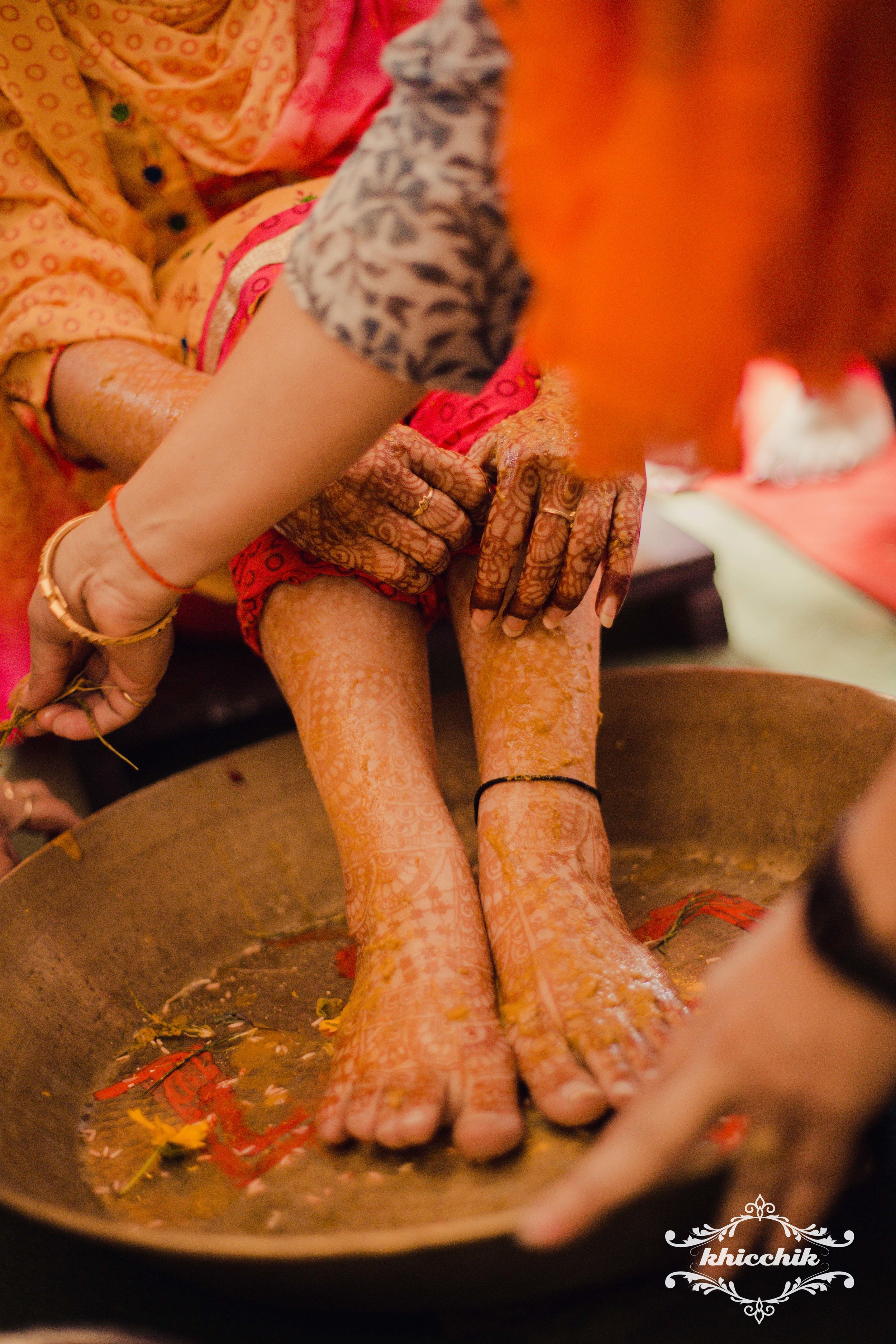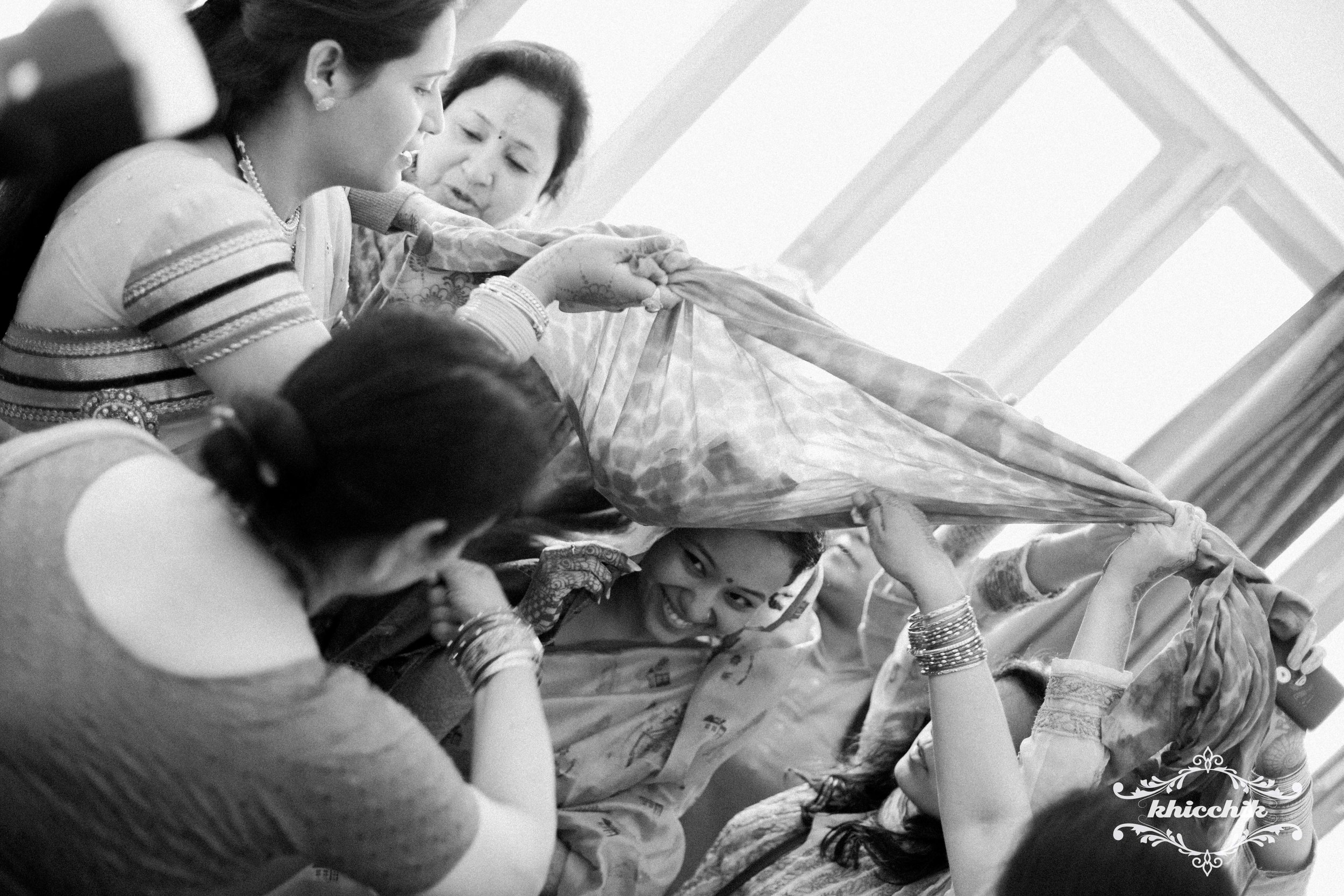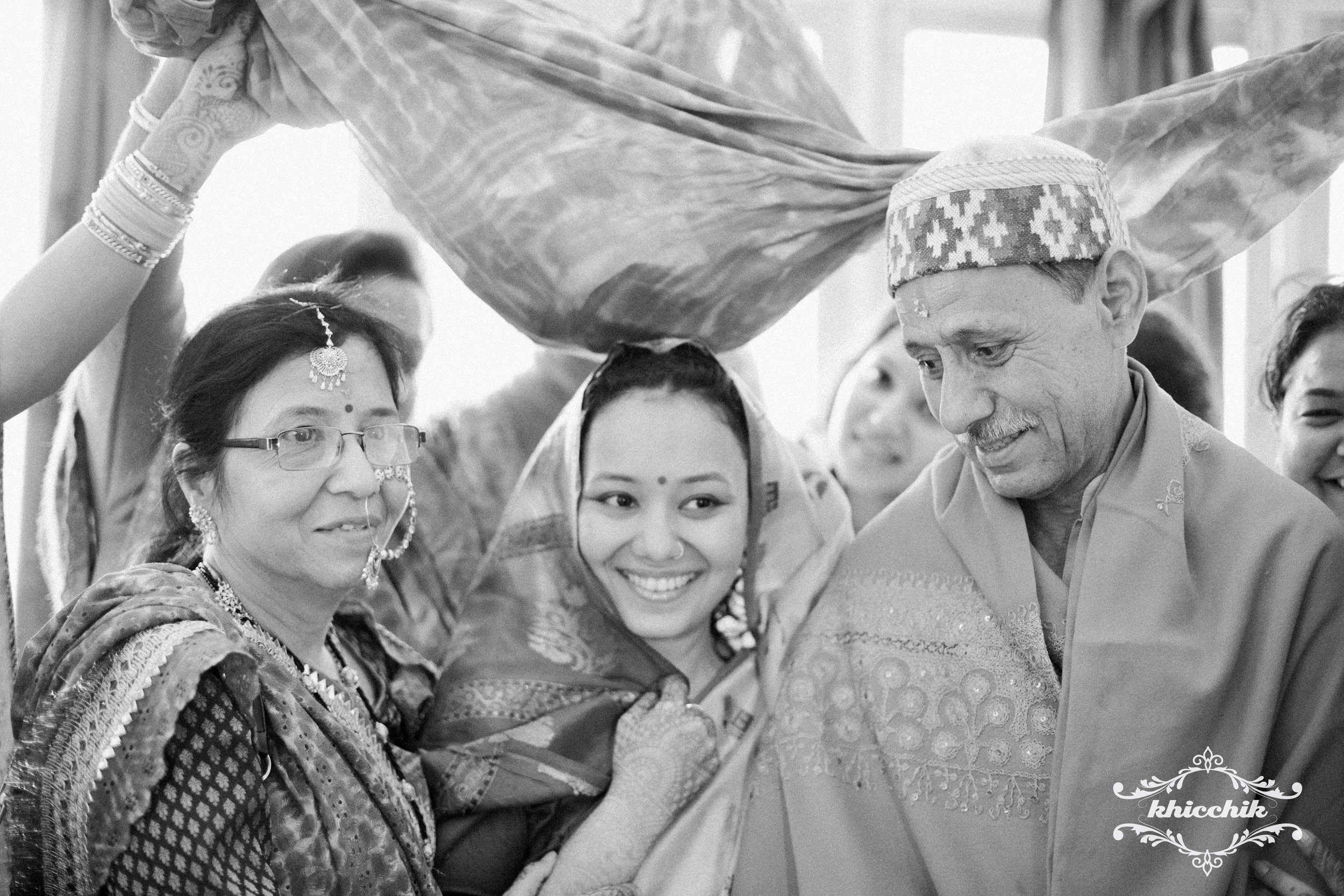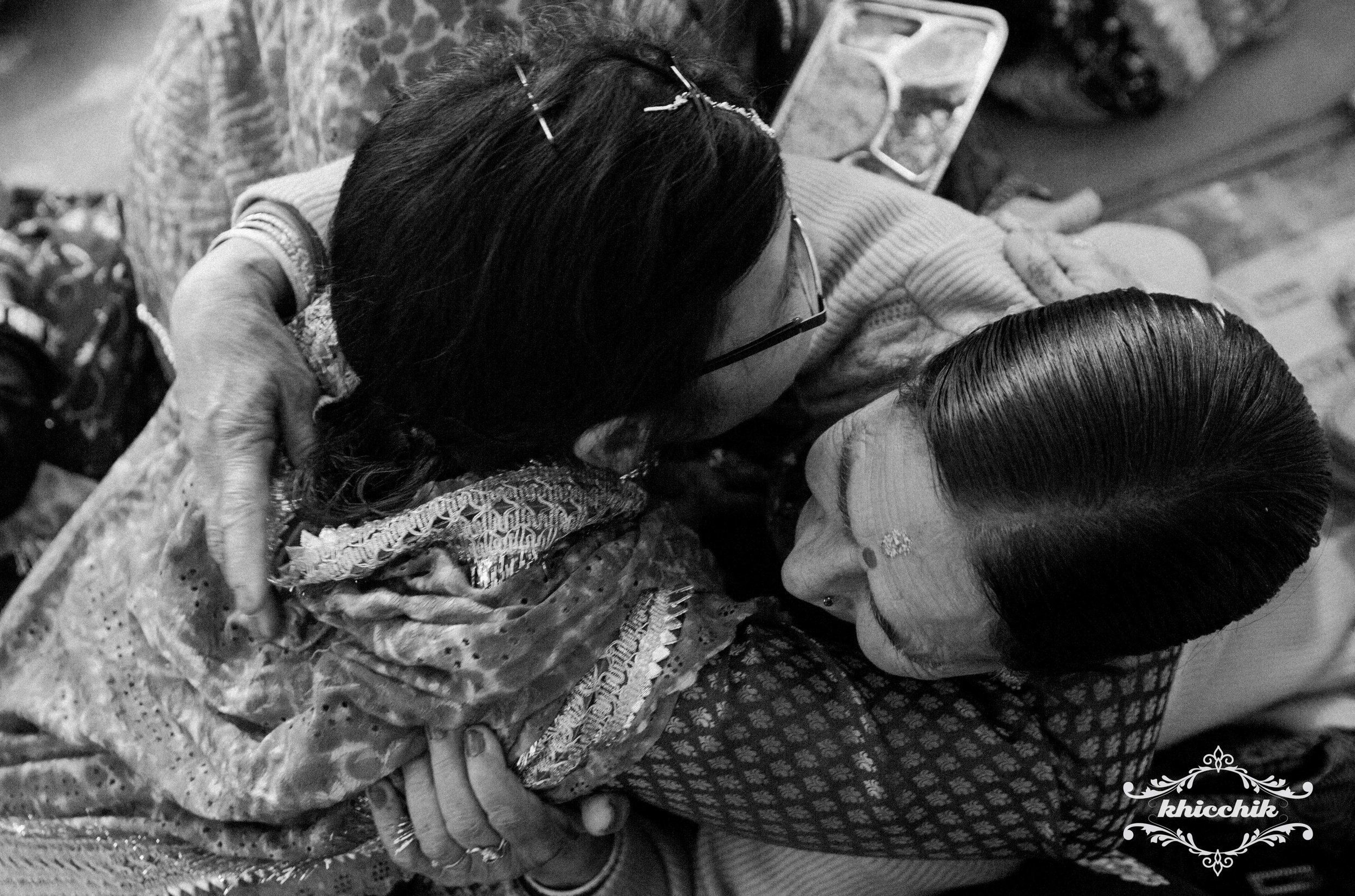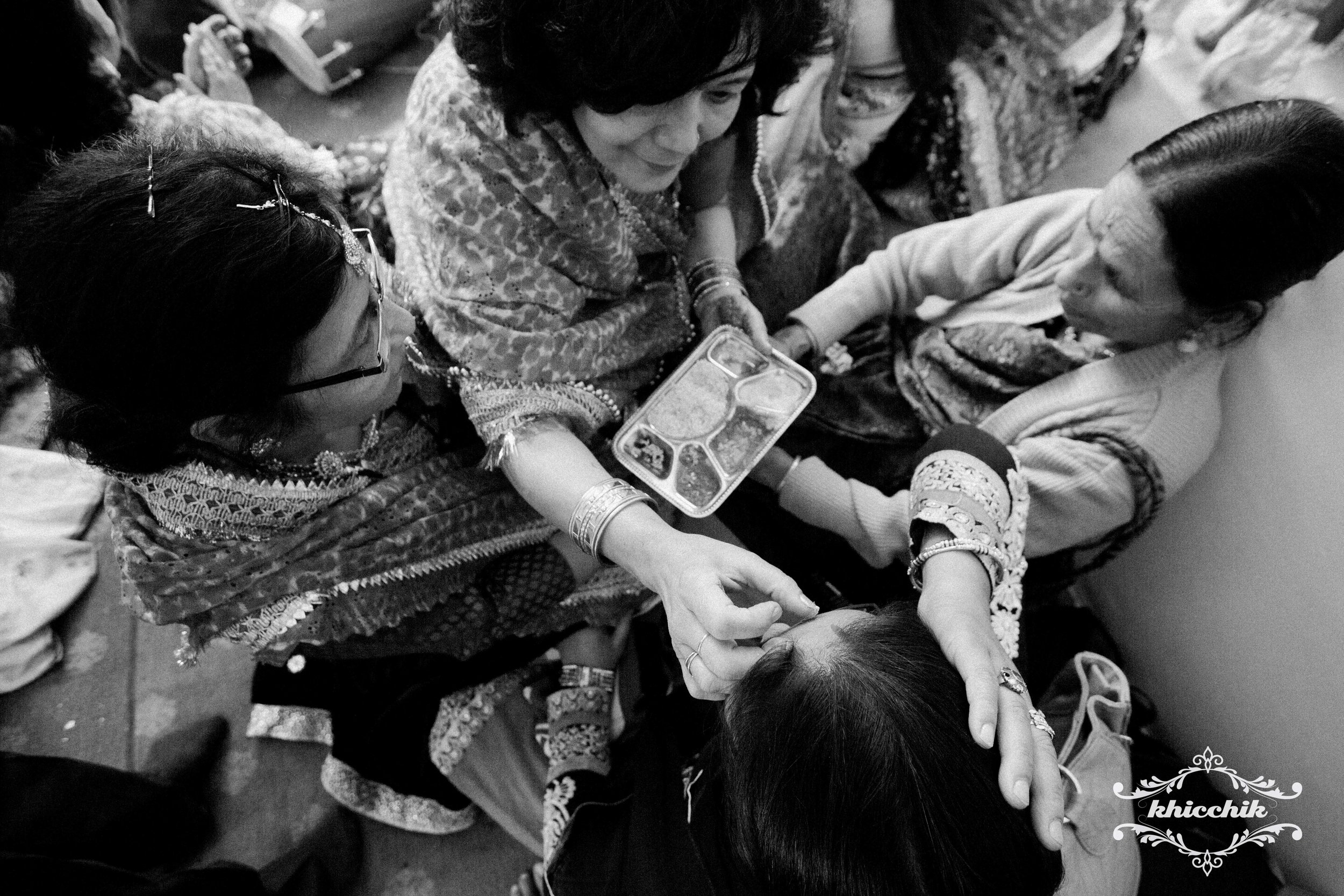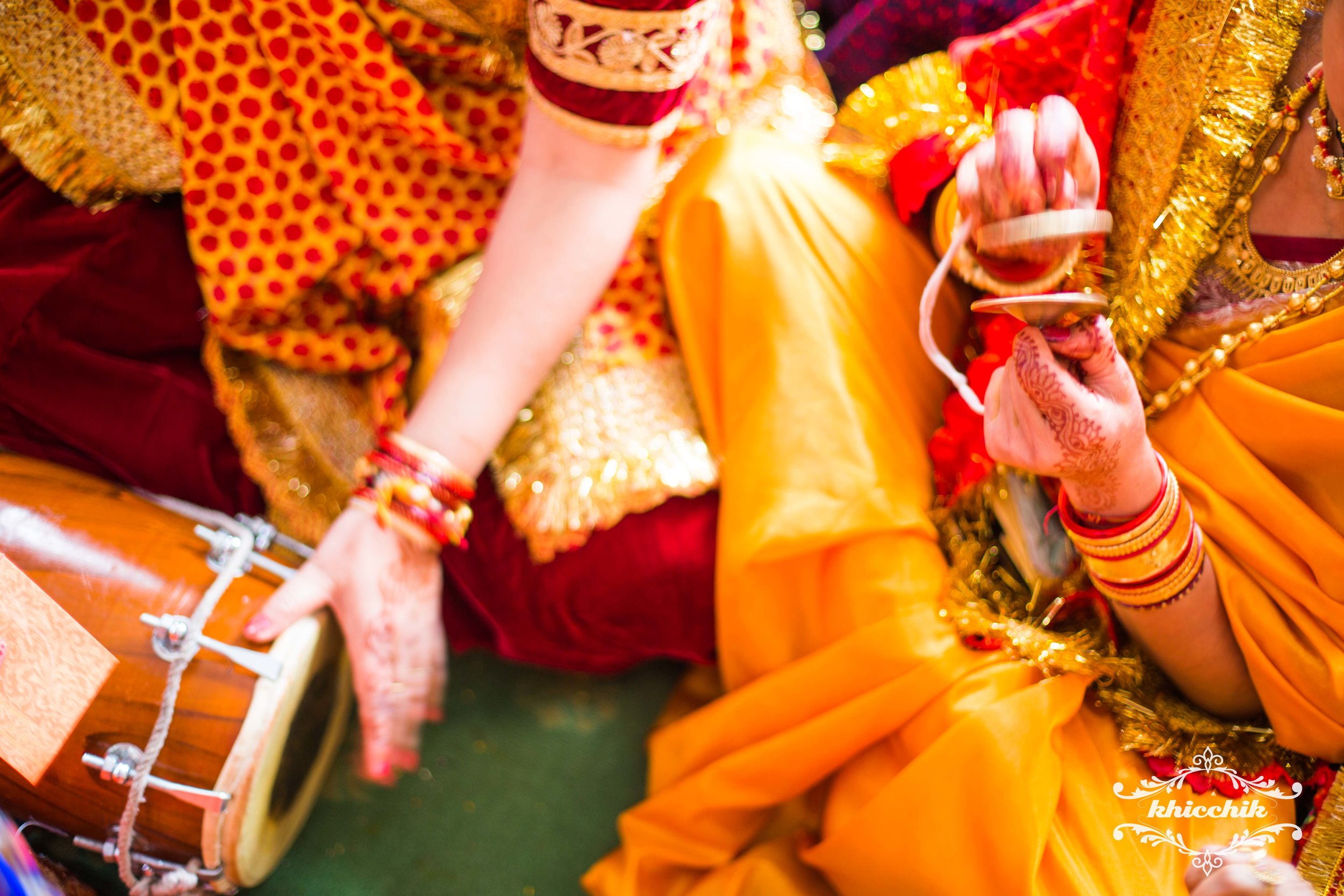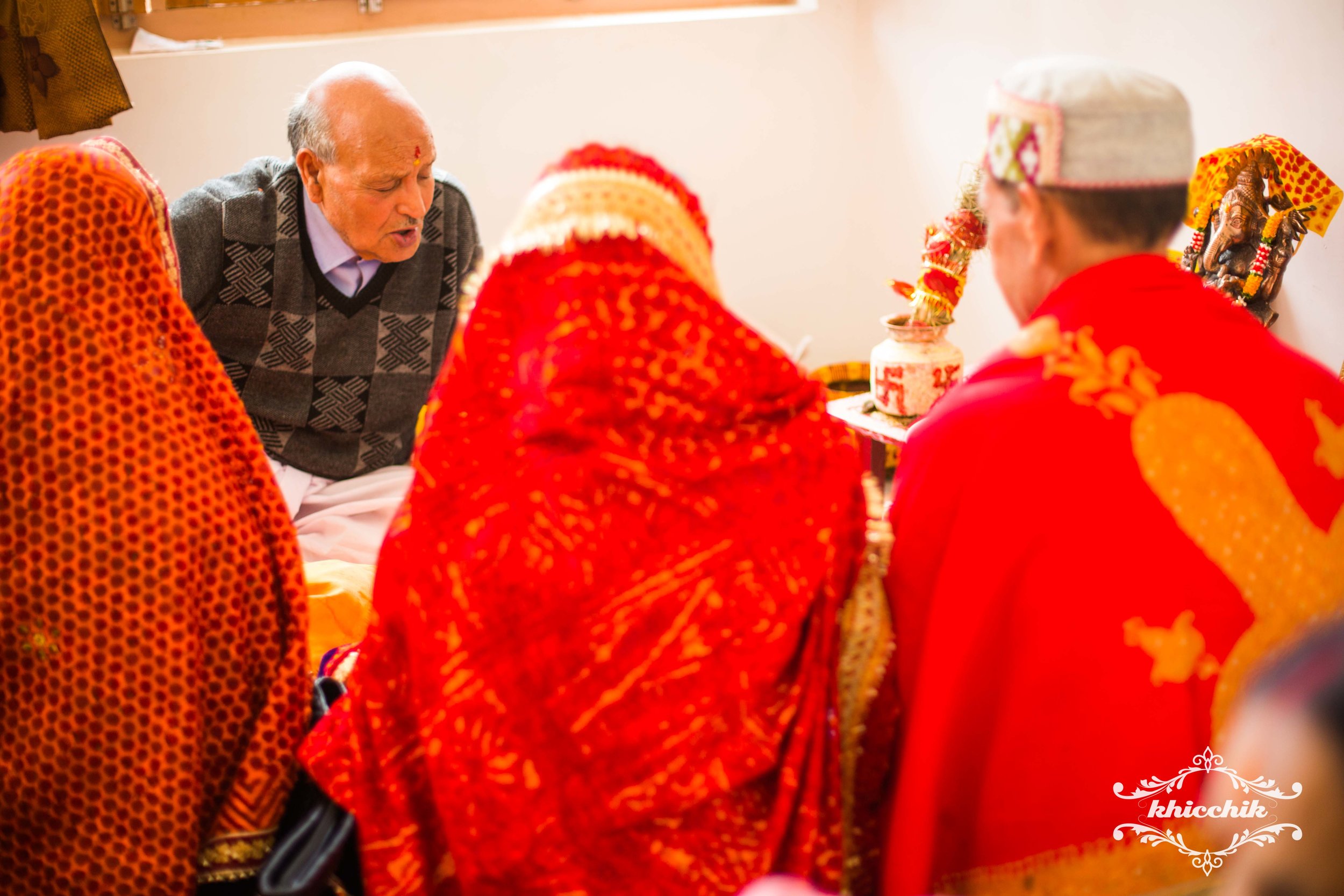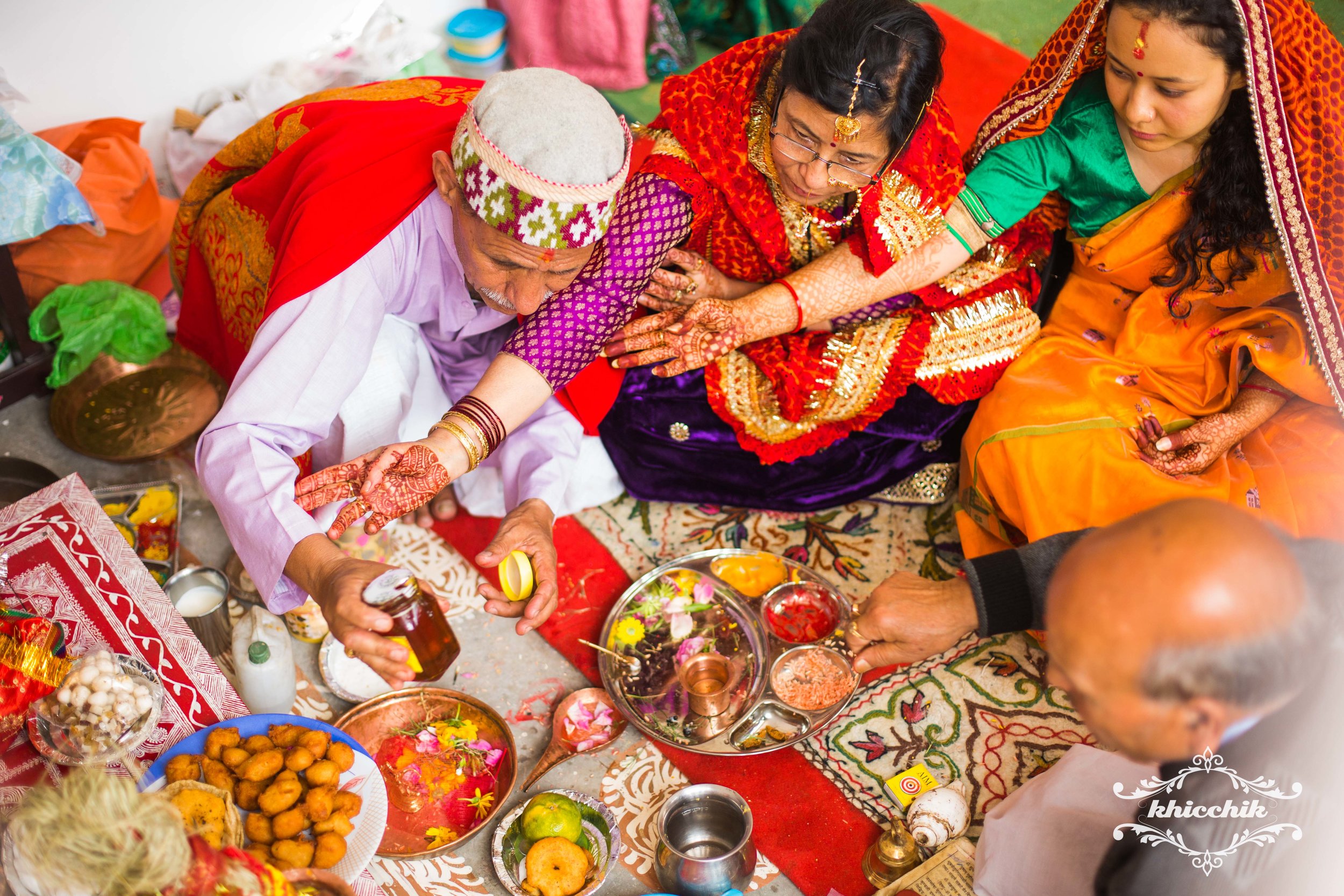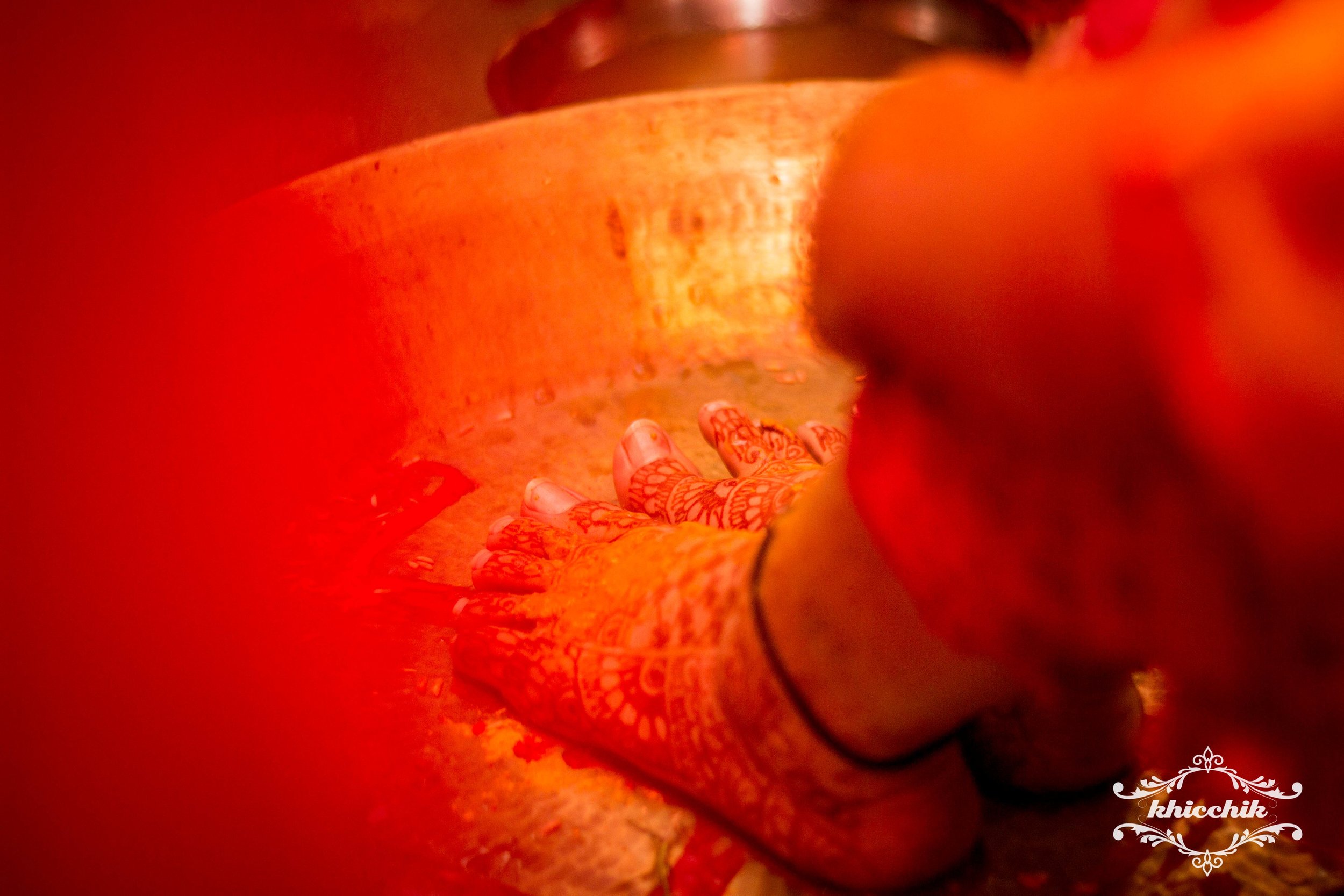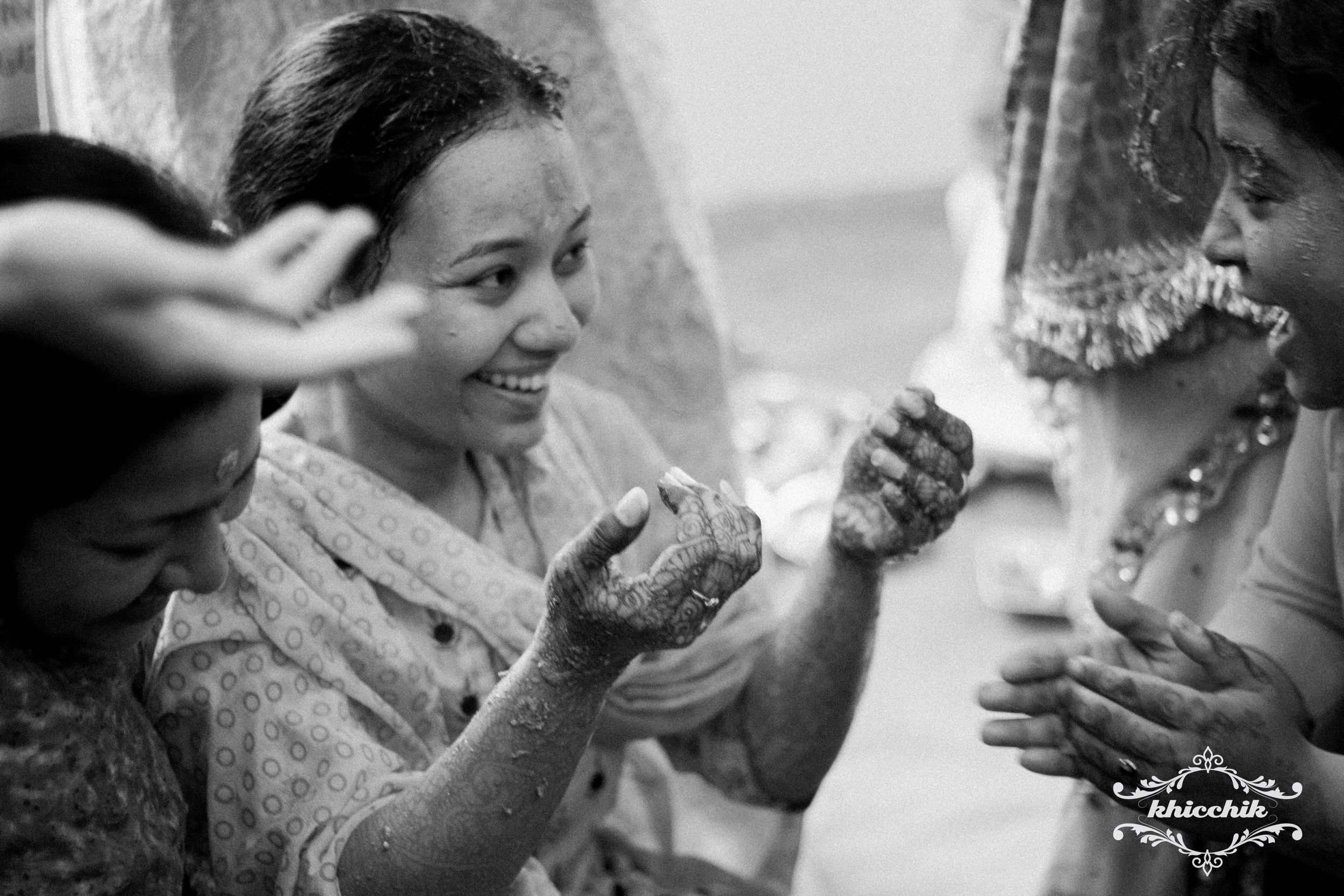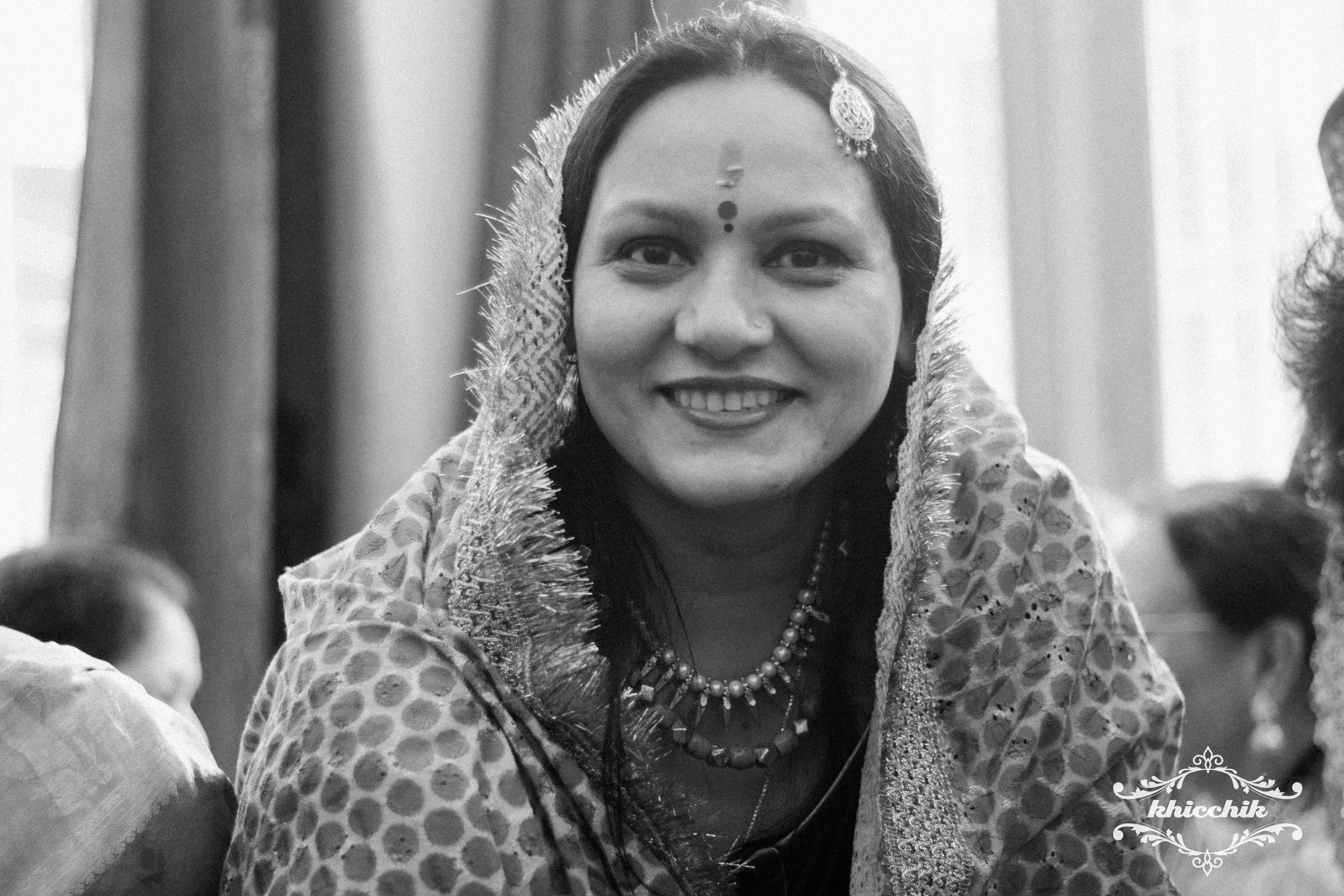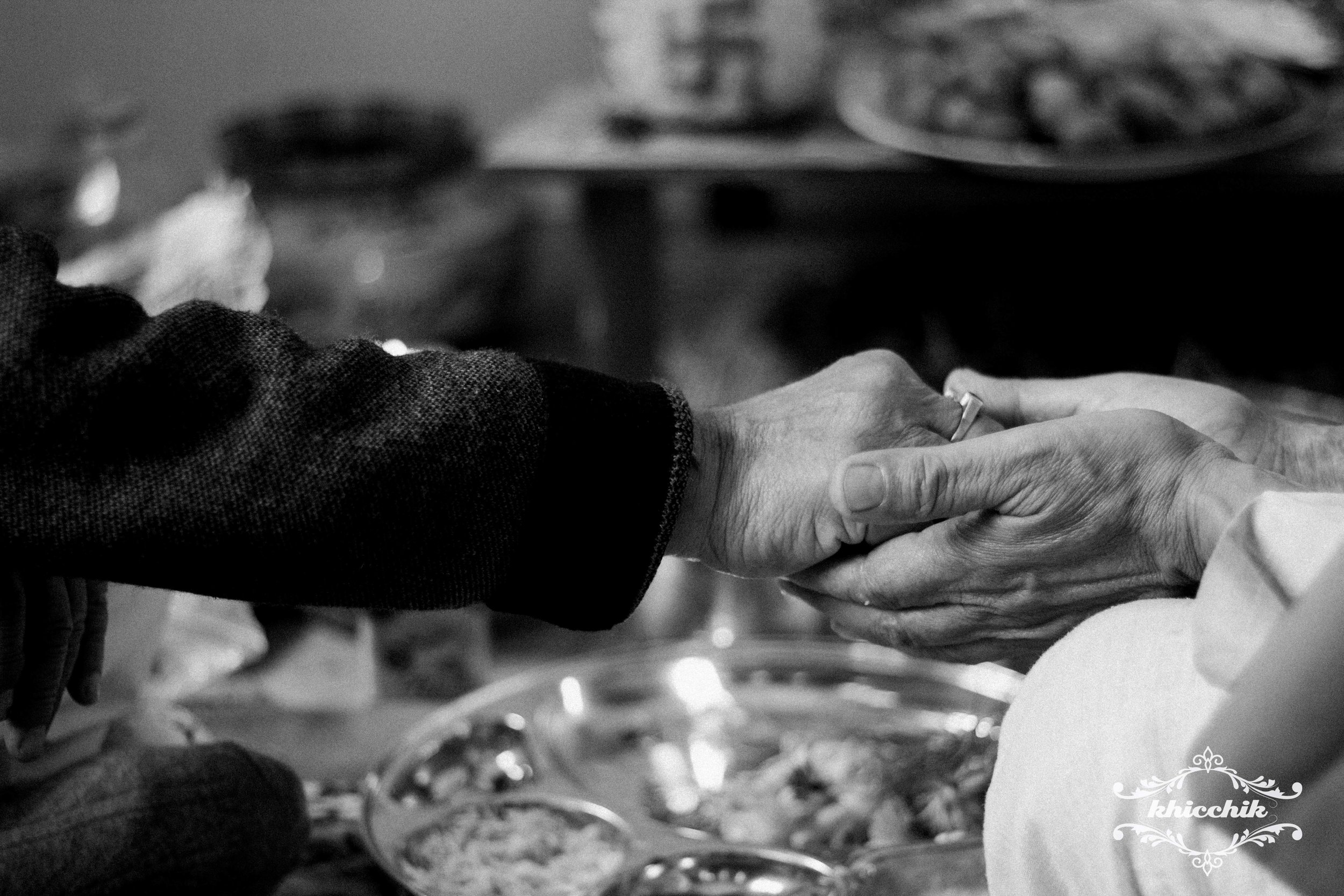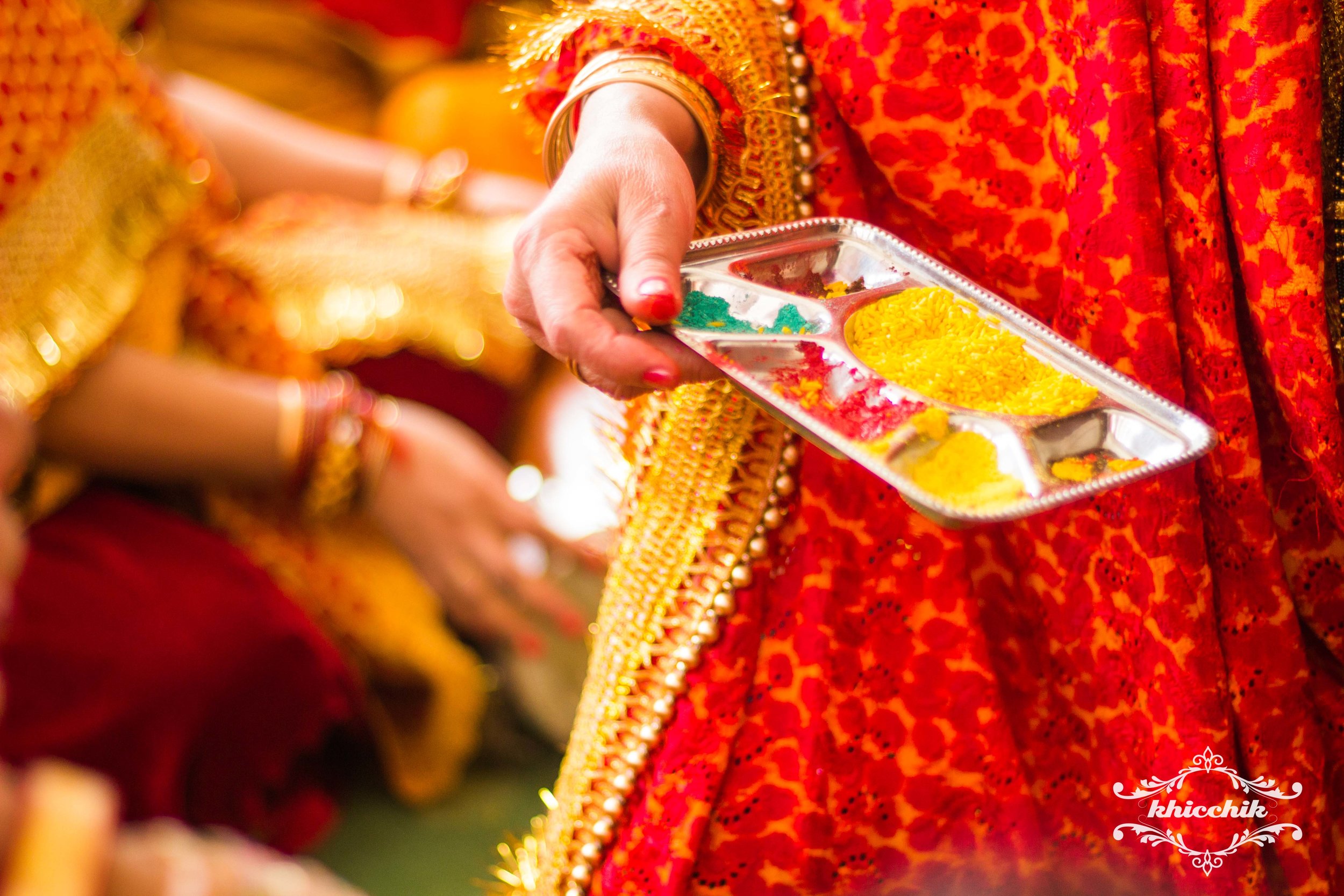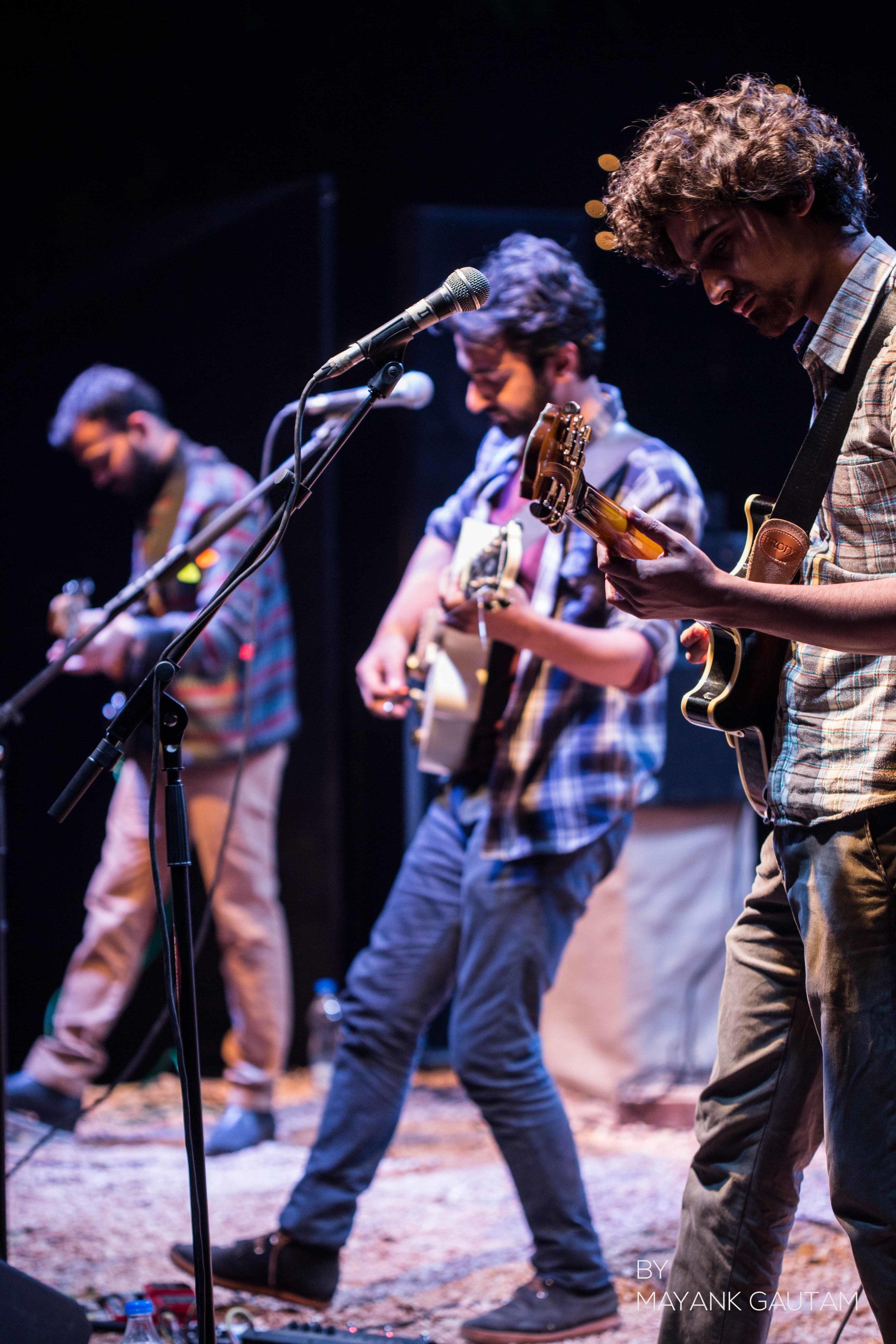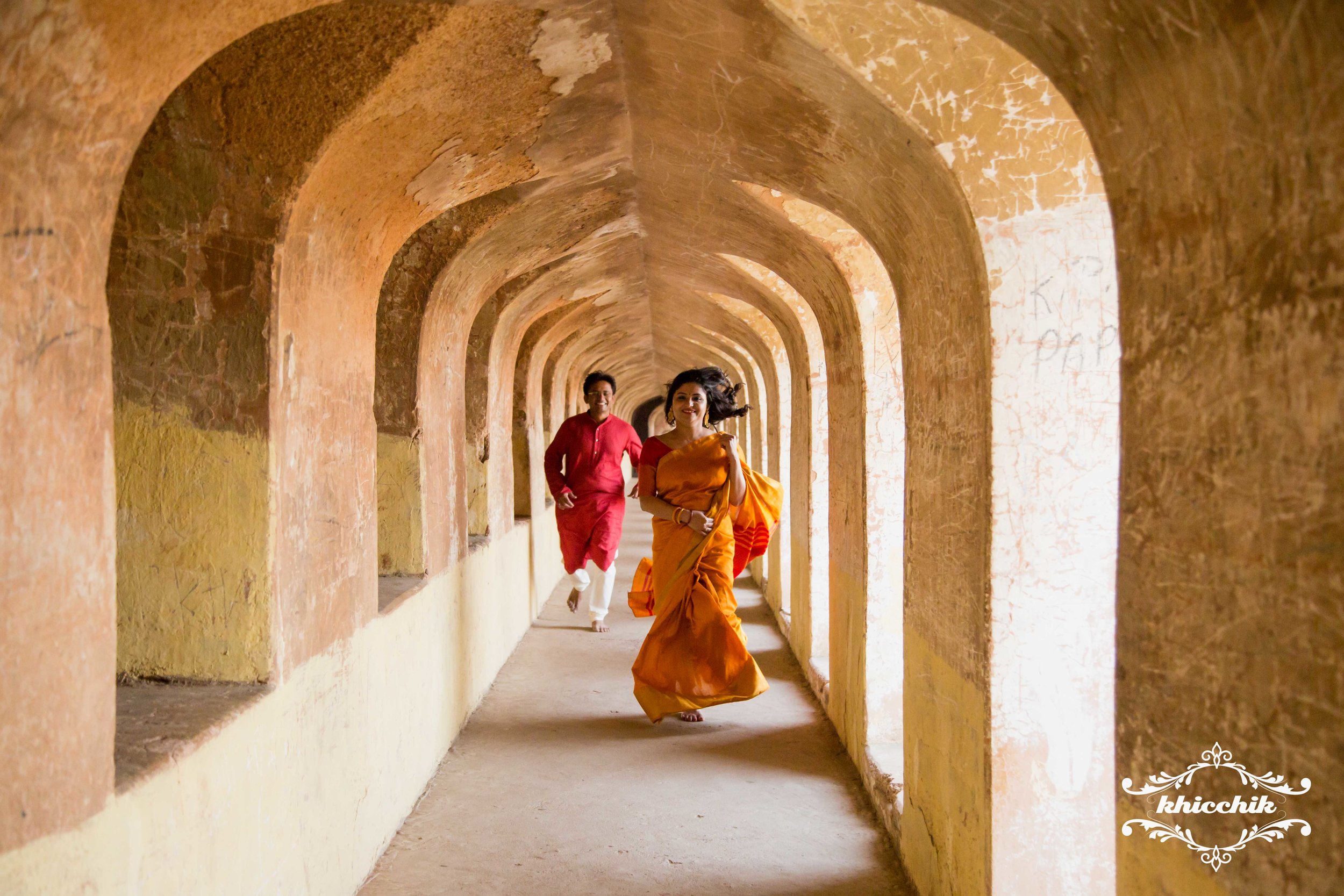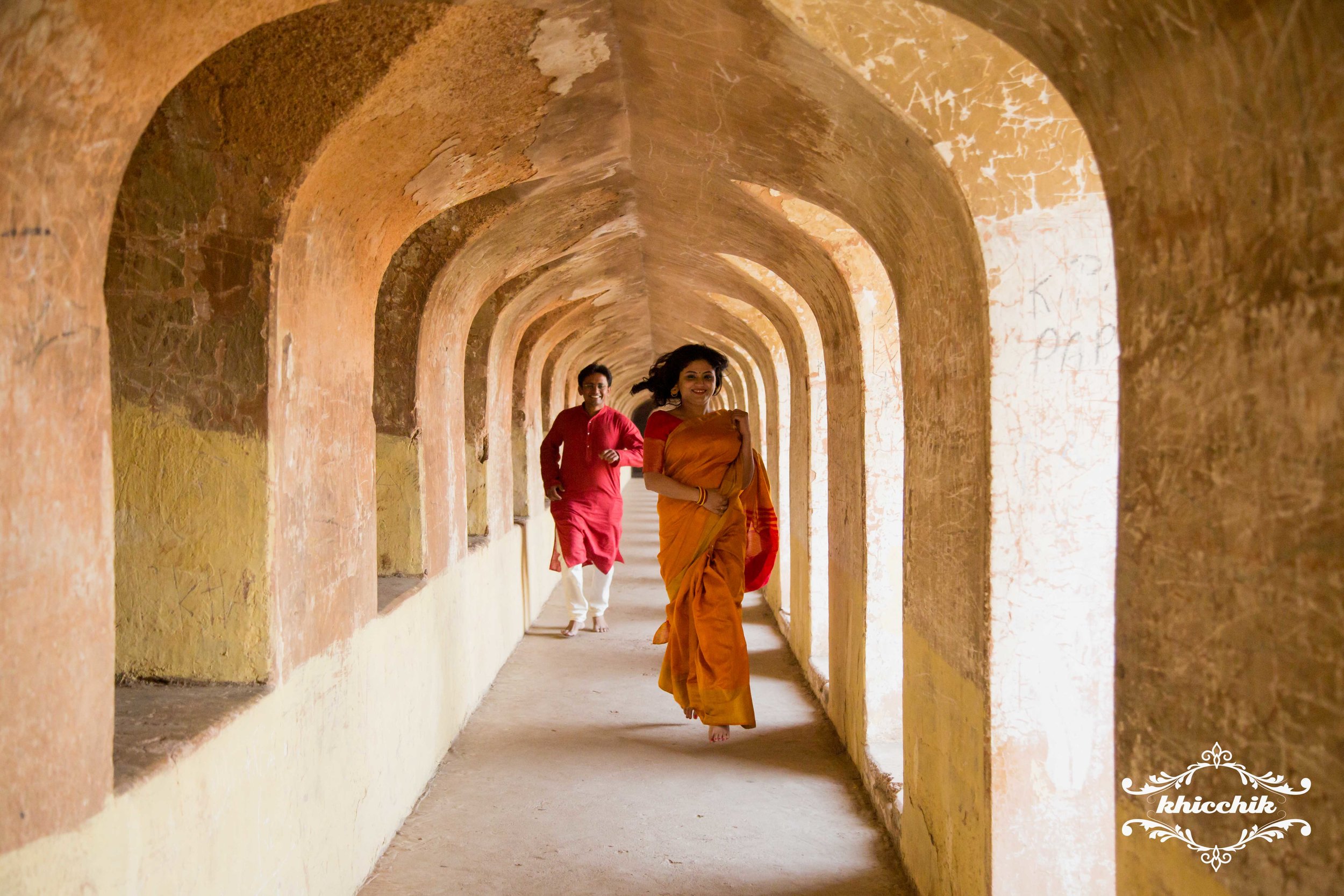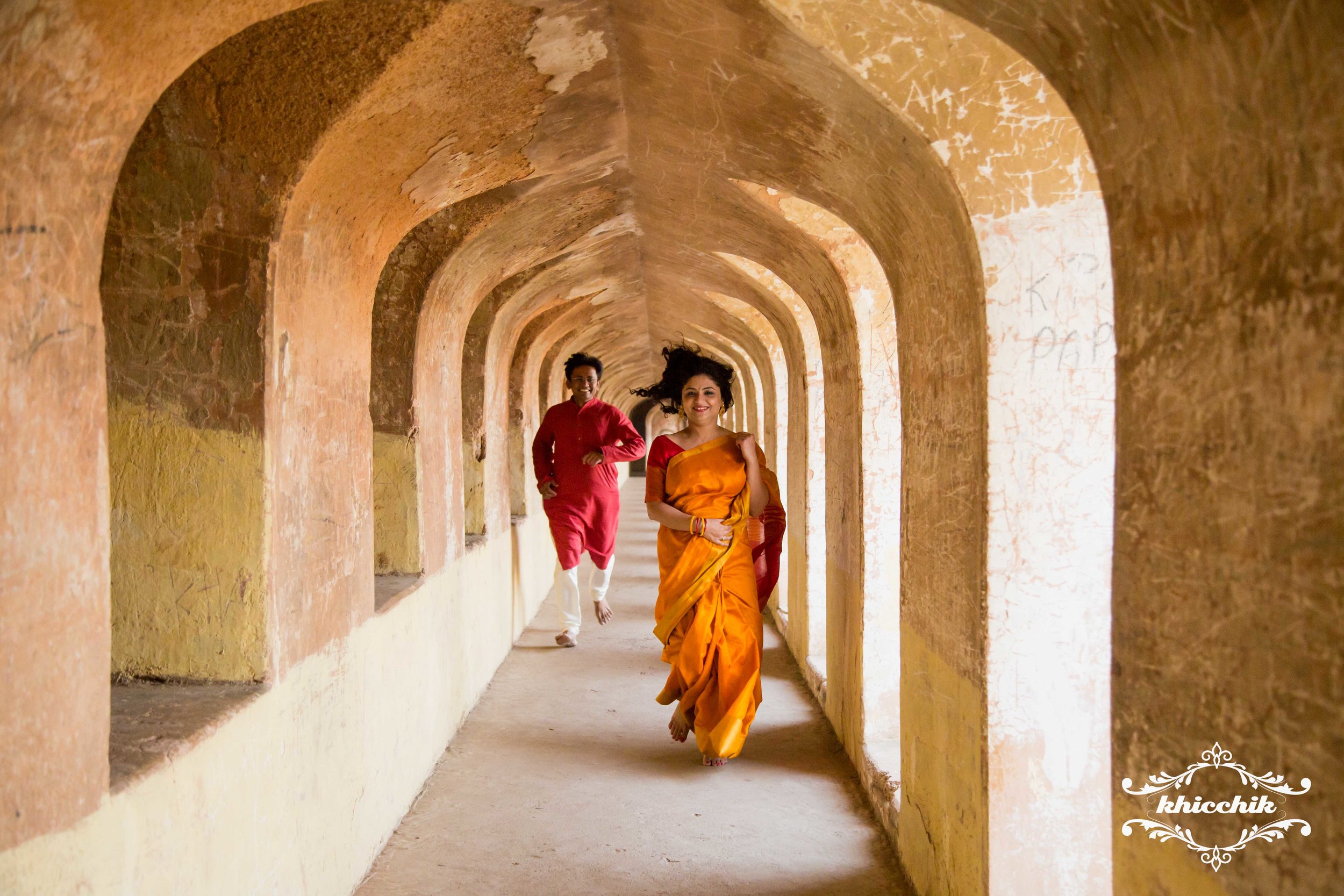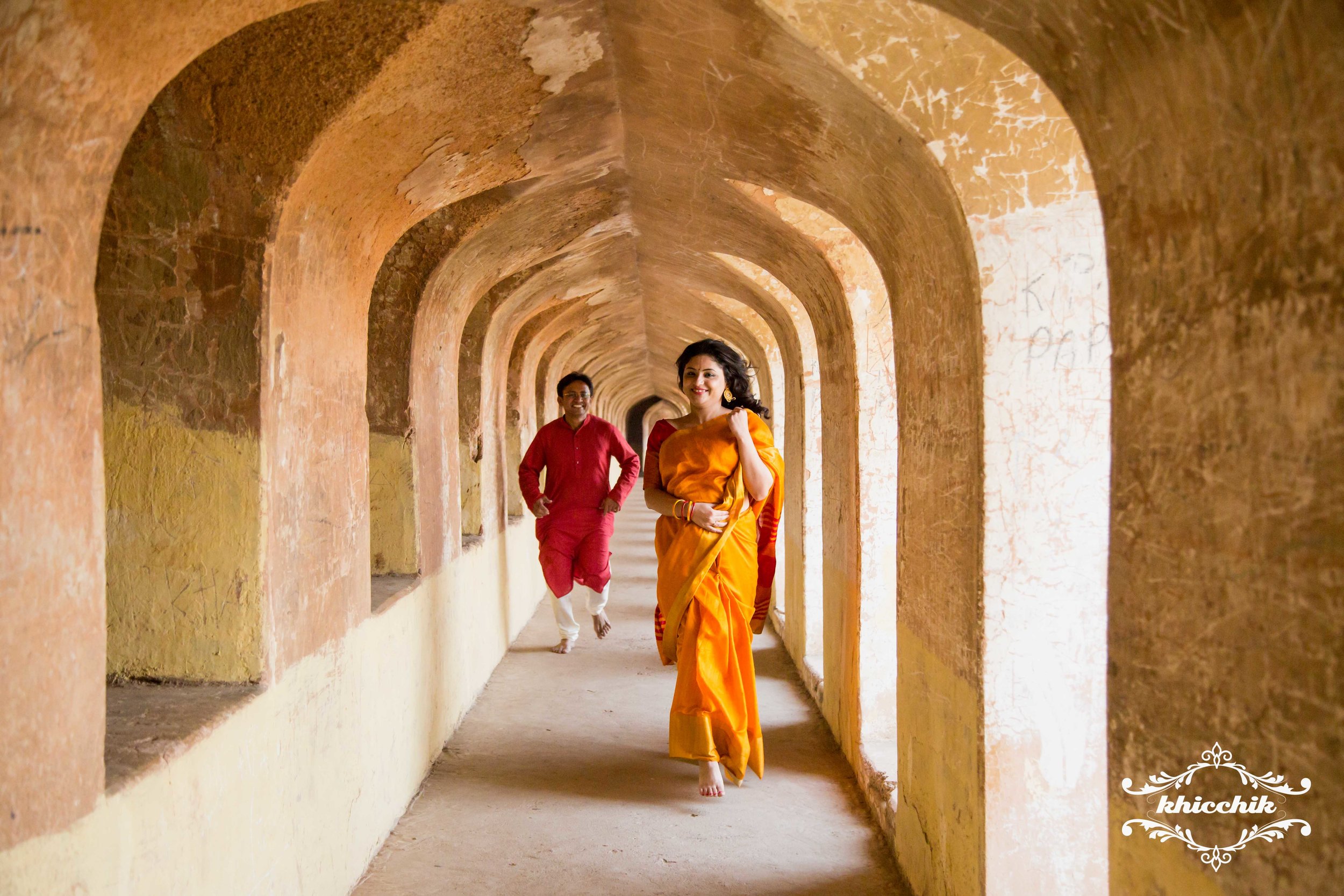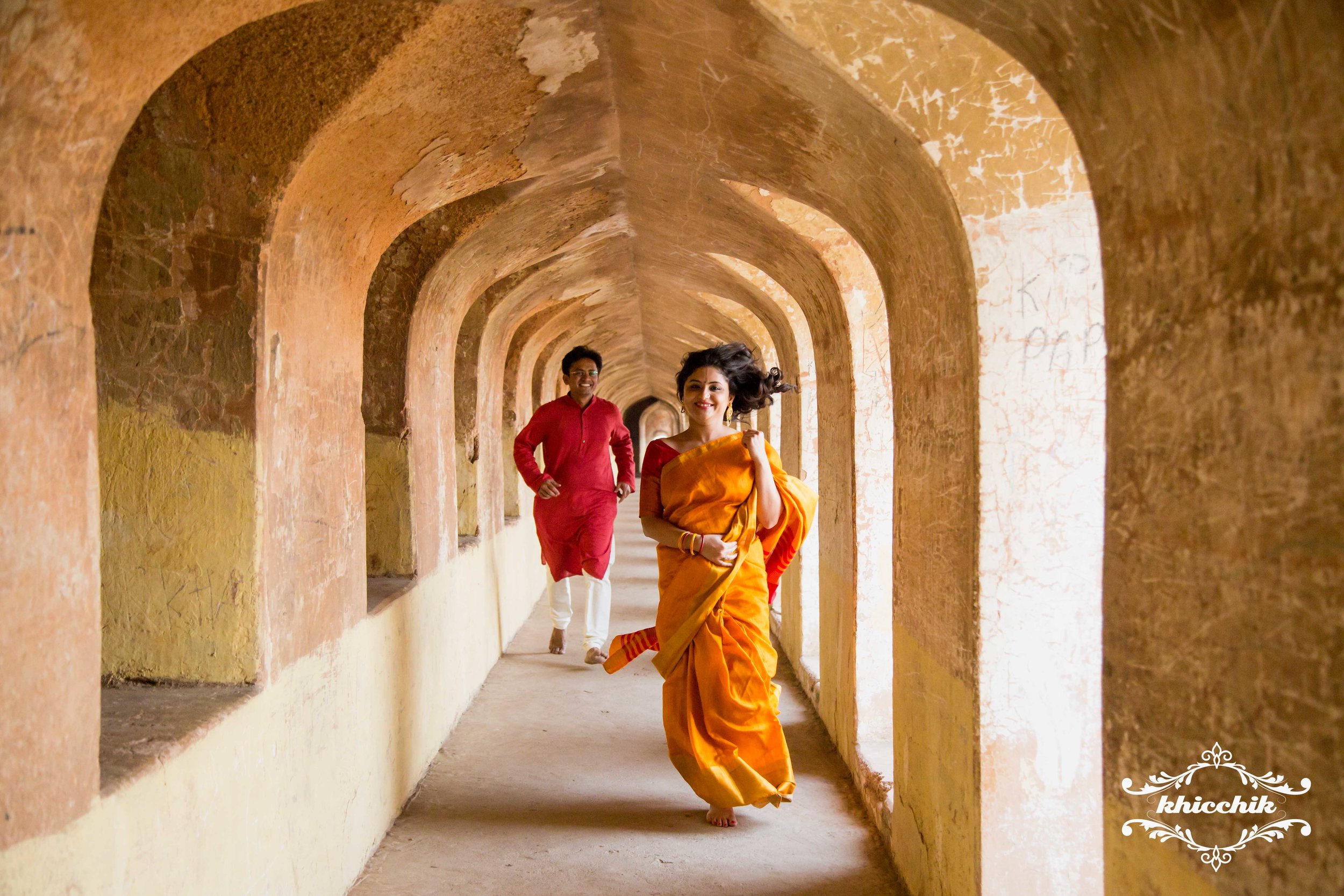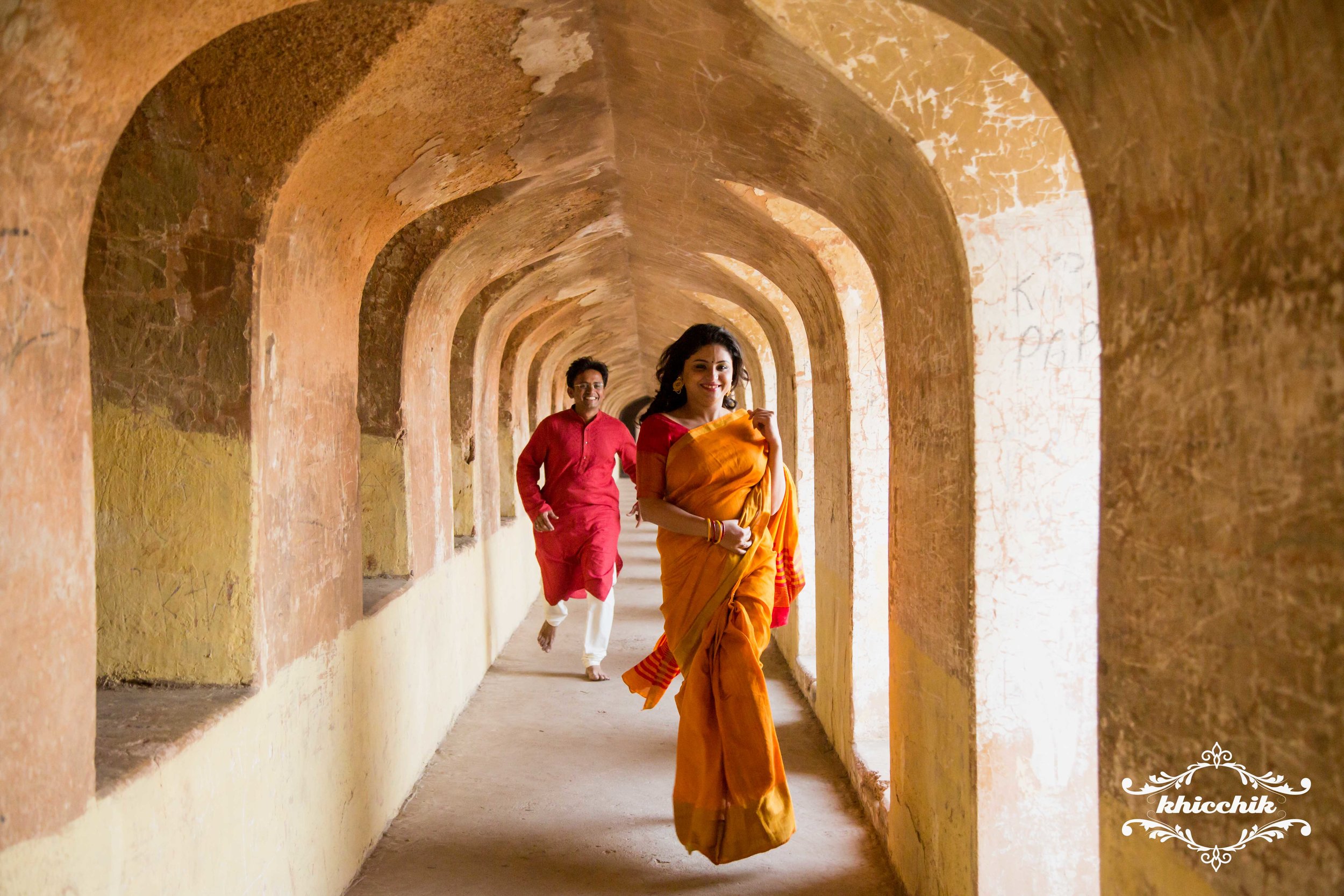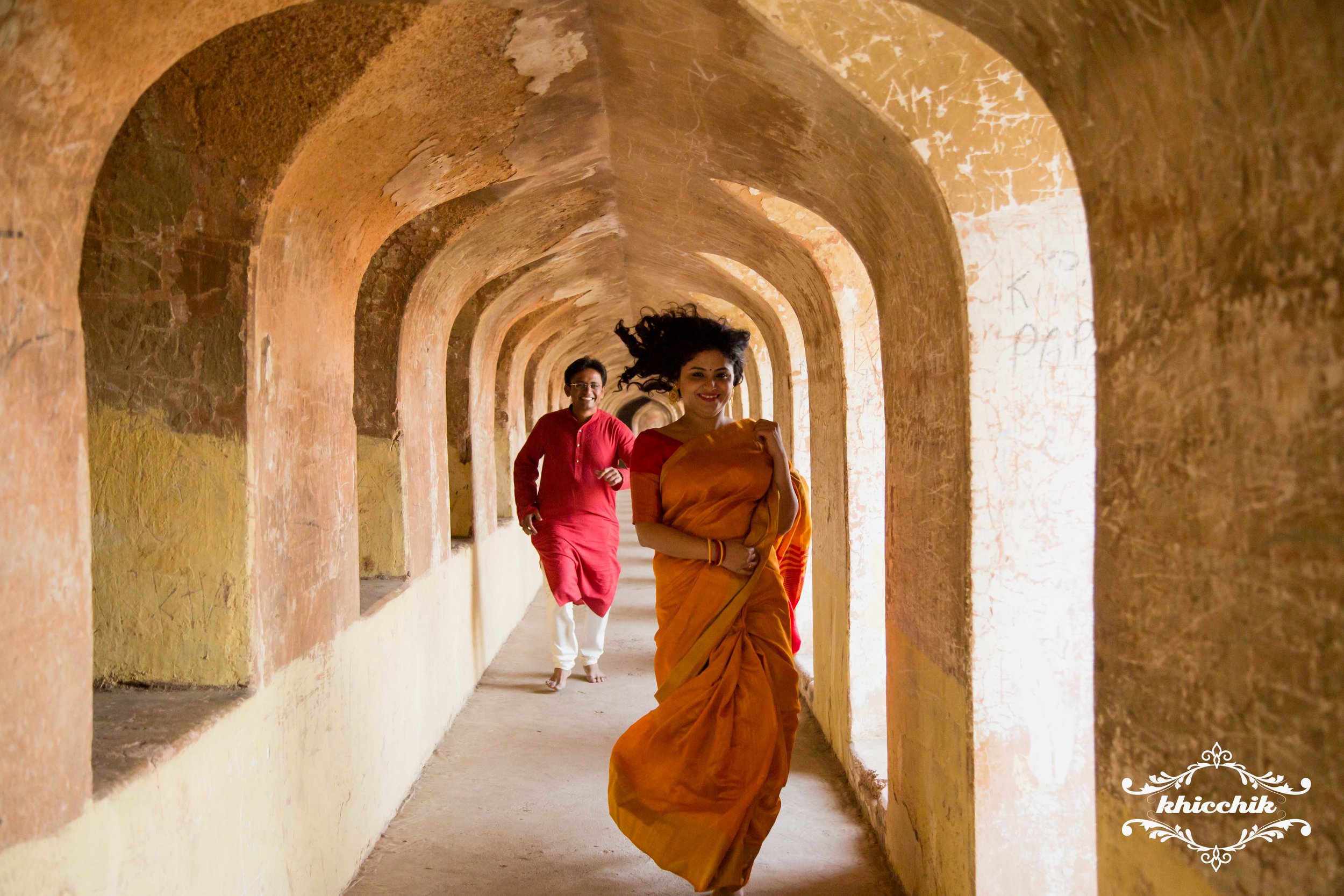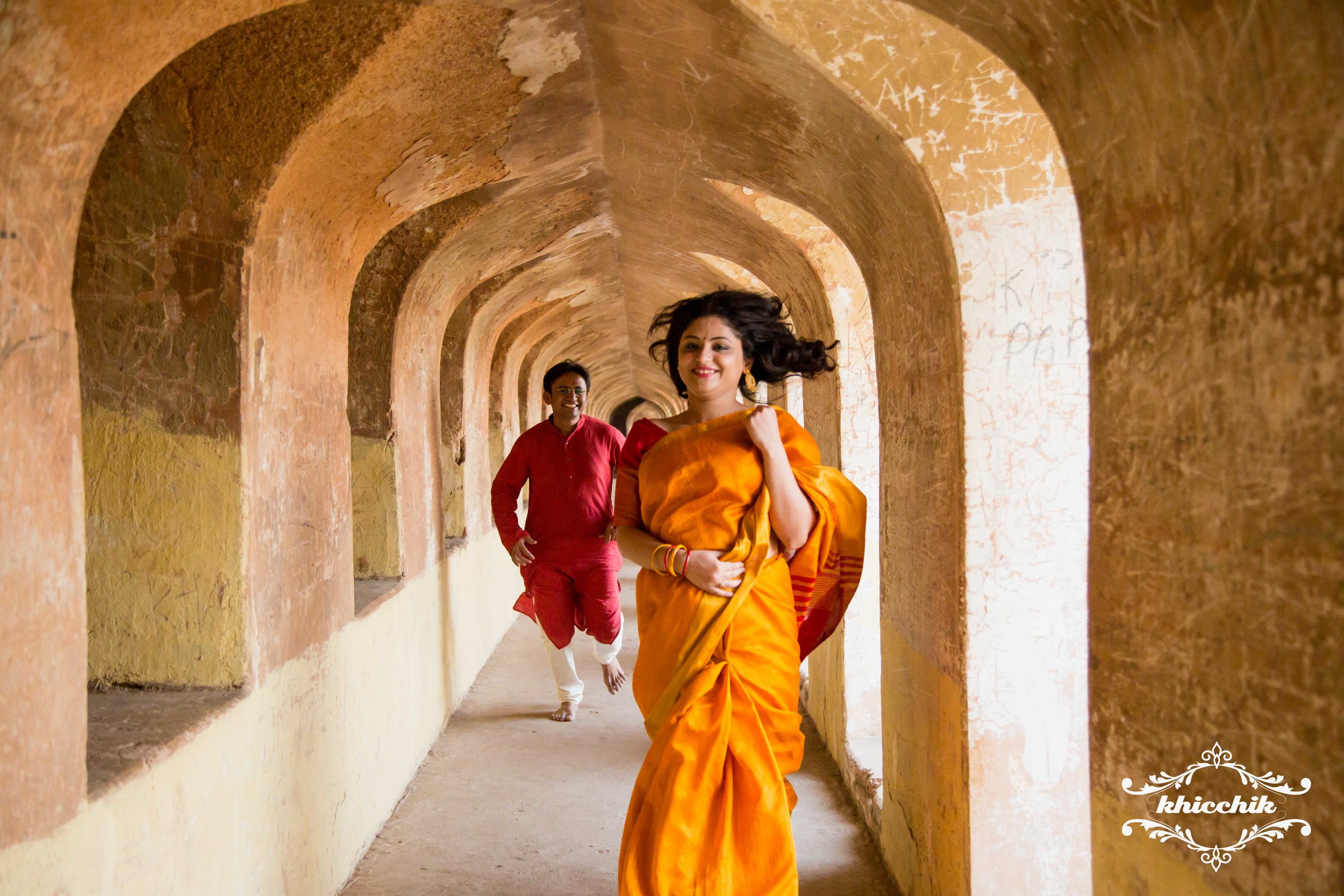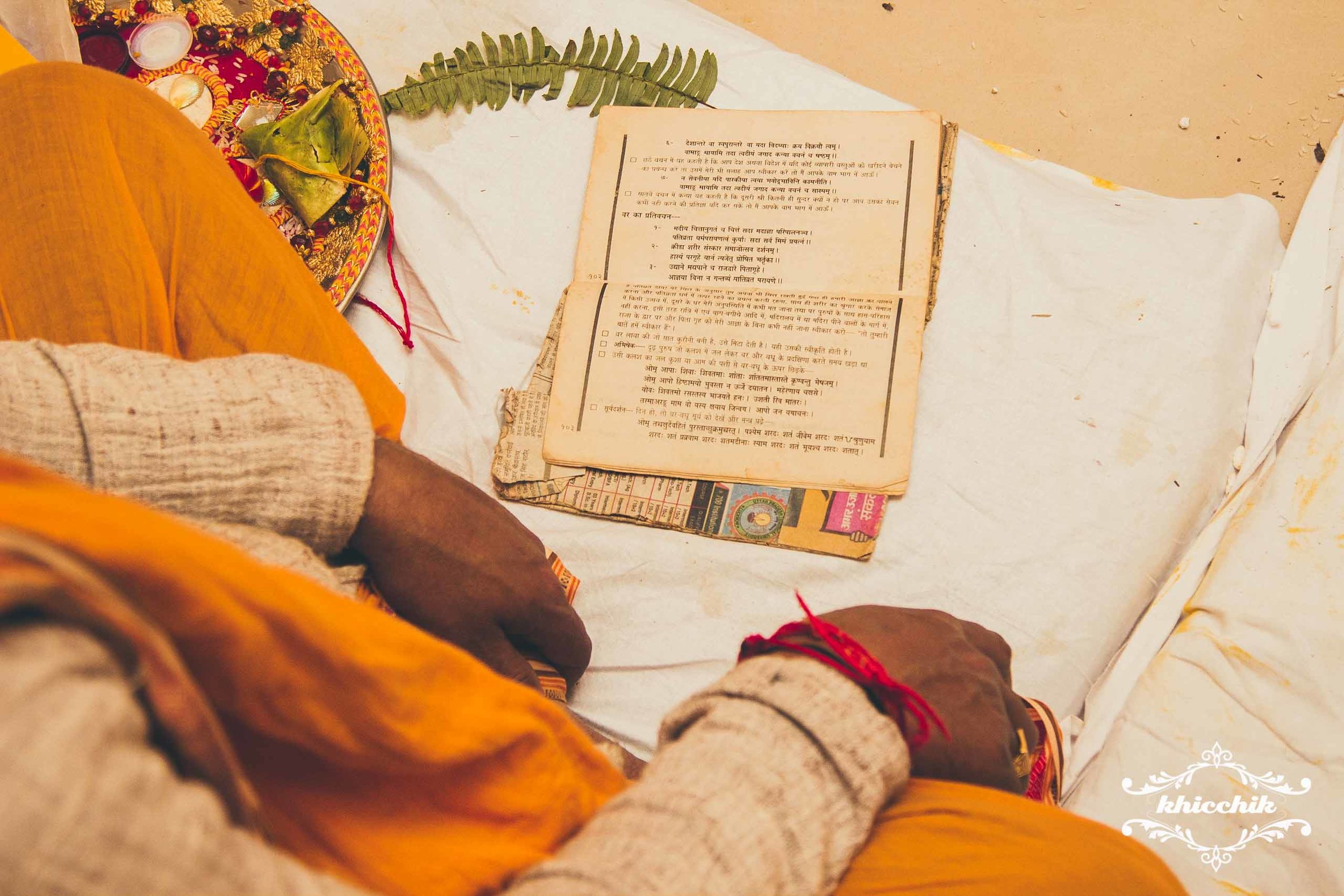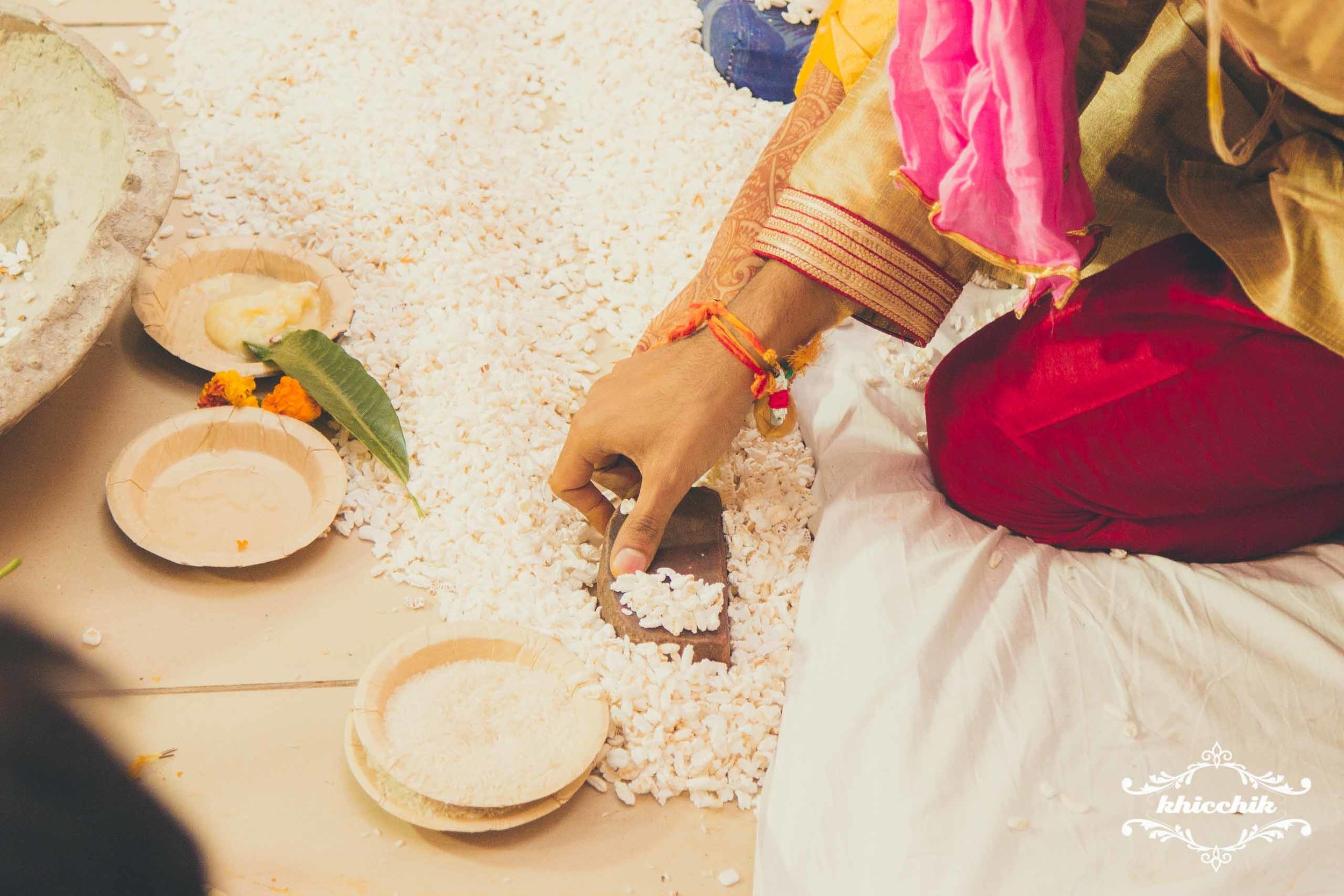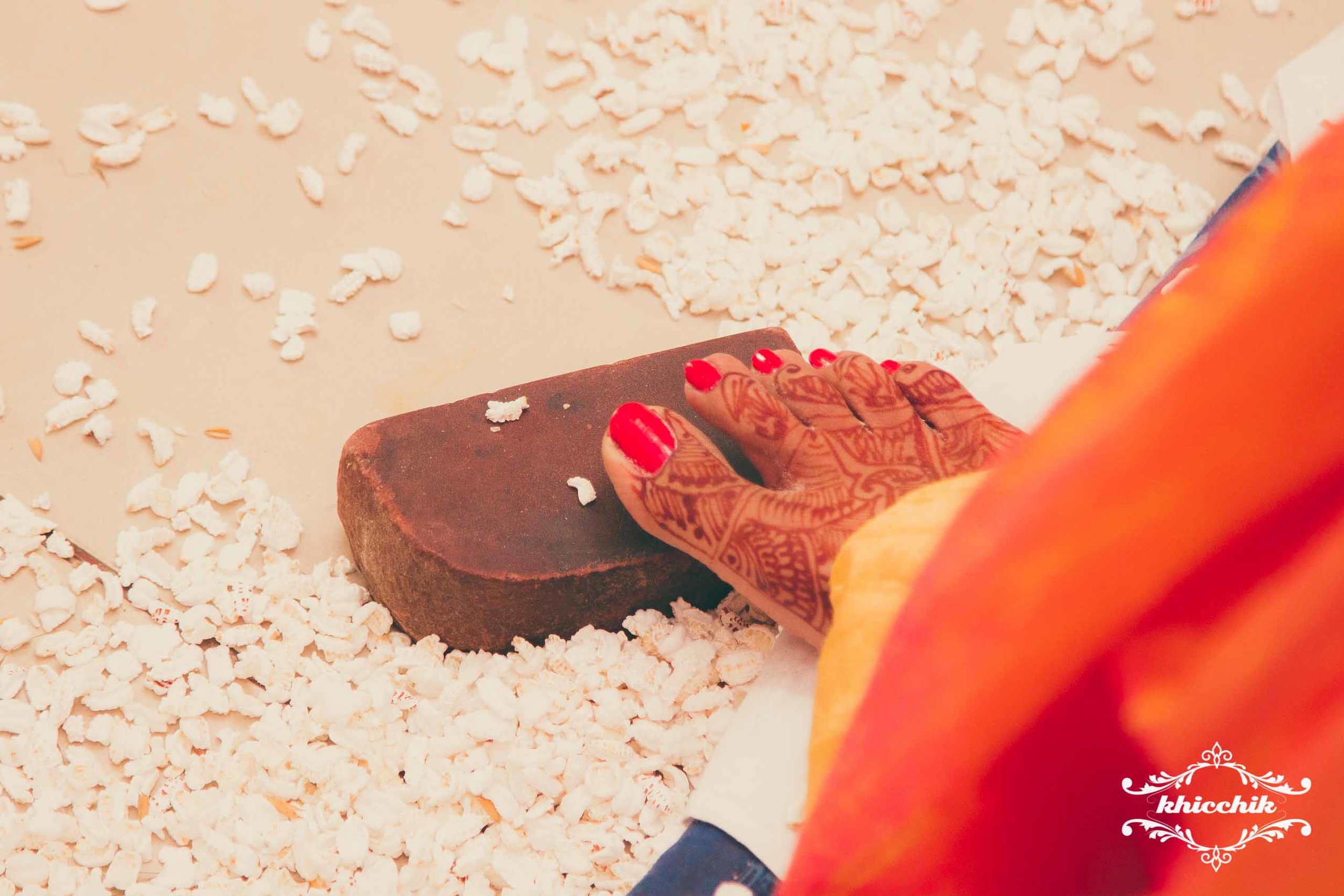Ever since I photographed the wedding of my proudly 'Pahadi' friend Rahul, I had spread the word that I want to shoot more of them even by taking a cut in the my fees. I absolutely love the all time smiling and laughing faces, the great camaraderie among the family members and the colorful Sarees that the women wear. The energy just transfers onto you and in the pictures.
The loveliest part of the deal was that this wedding album was being gifted to Manika (the bride) by her cousins, one of them is an old friend from theater, while the family had hired their own regular photographer. It's uplifting when your friends believe in you that much. The first leg of the wedding was the Sangeet ceremony in Lucknow where Manika's father was looking after all the arrangements before the guests poured in.
I managed to get a picture of him in a somber mood before that guest actually started pouring in.
Love this portrait of Manika which I managed to make in one of the empty halls of the venue.

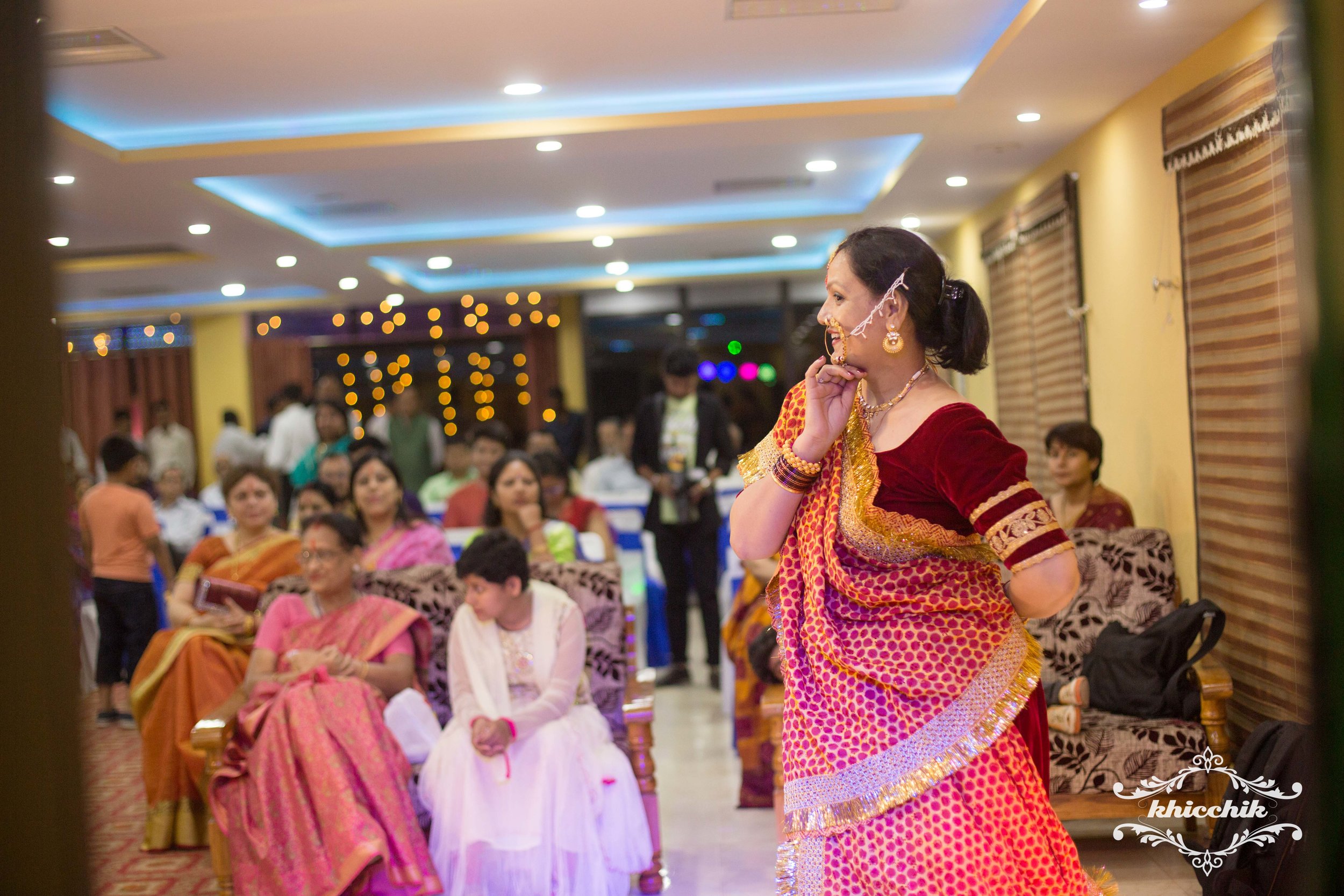

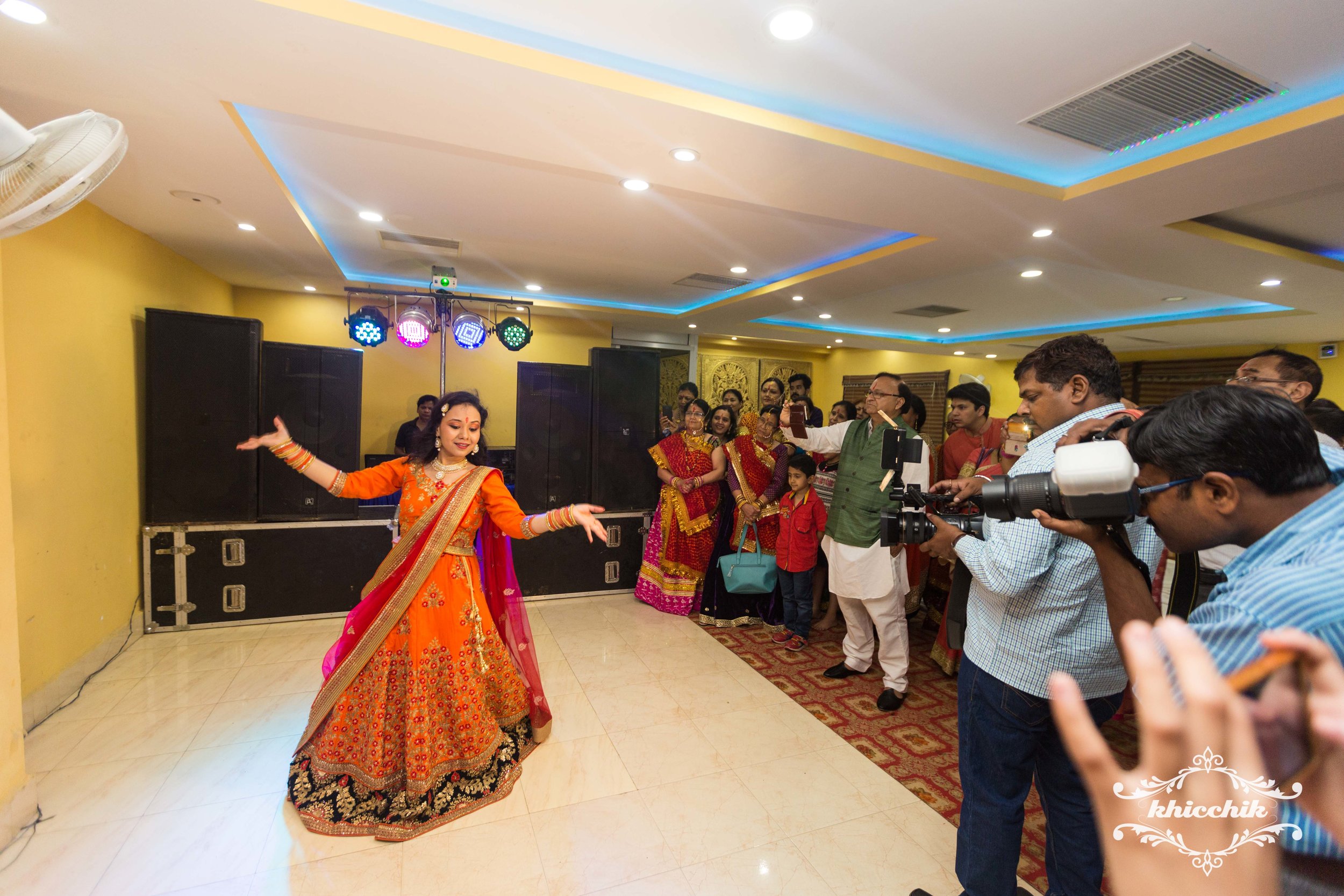
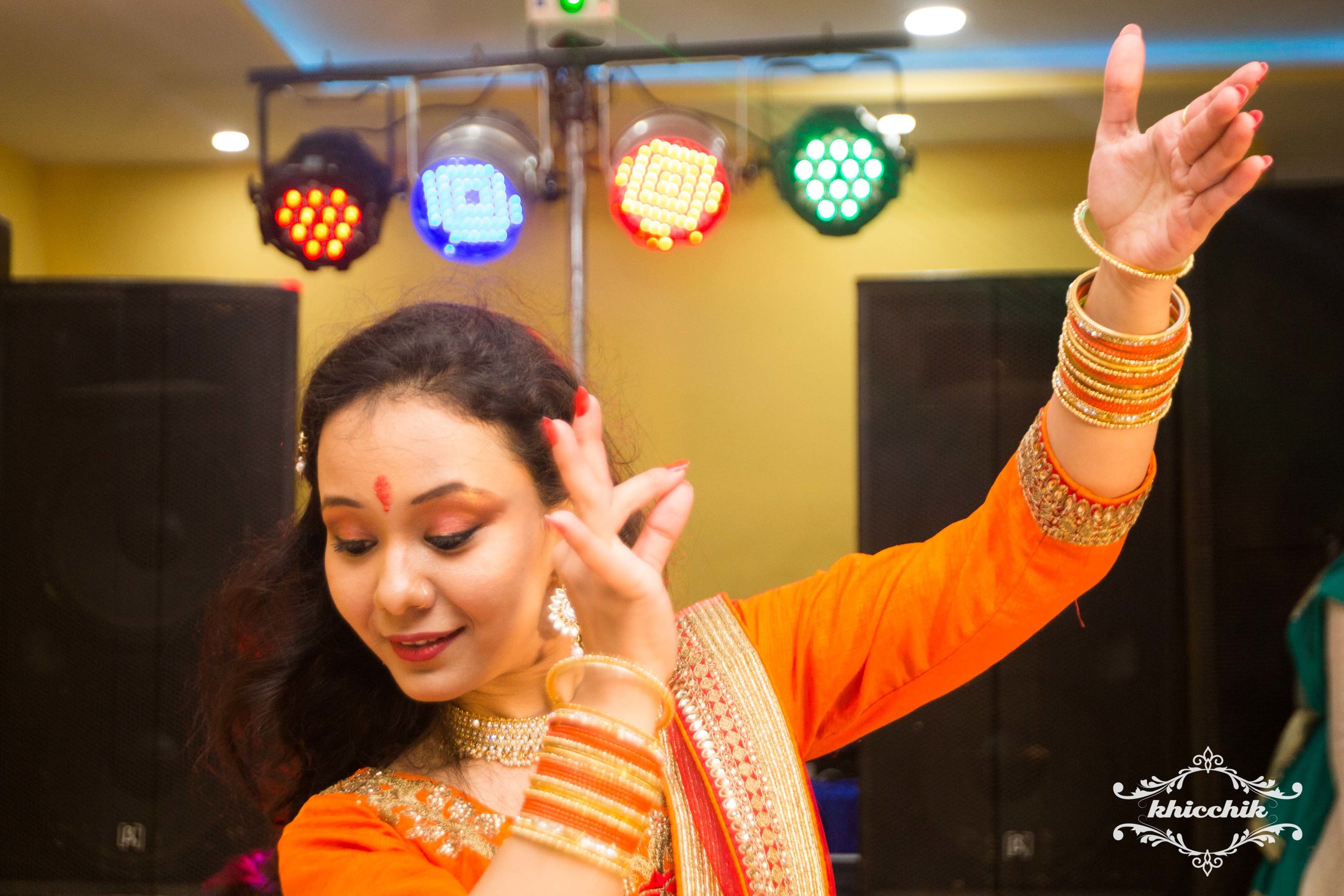
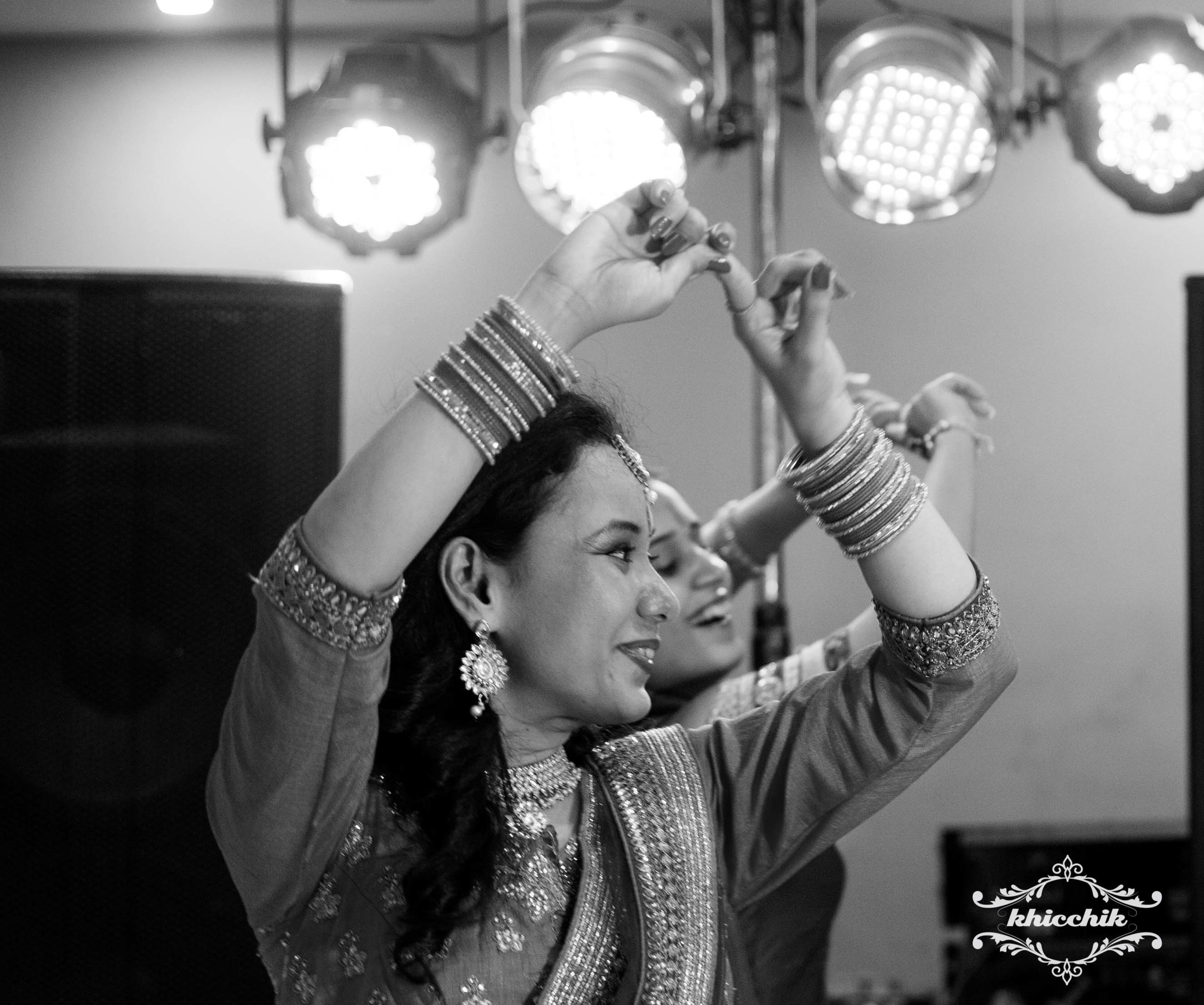
The wedding was to happen in Nainital, but not before the best Haldi ceremony I have ever experienced.
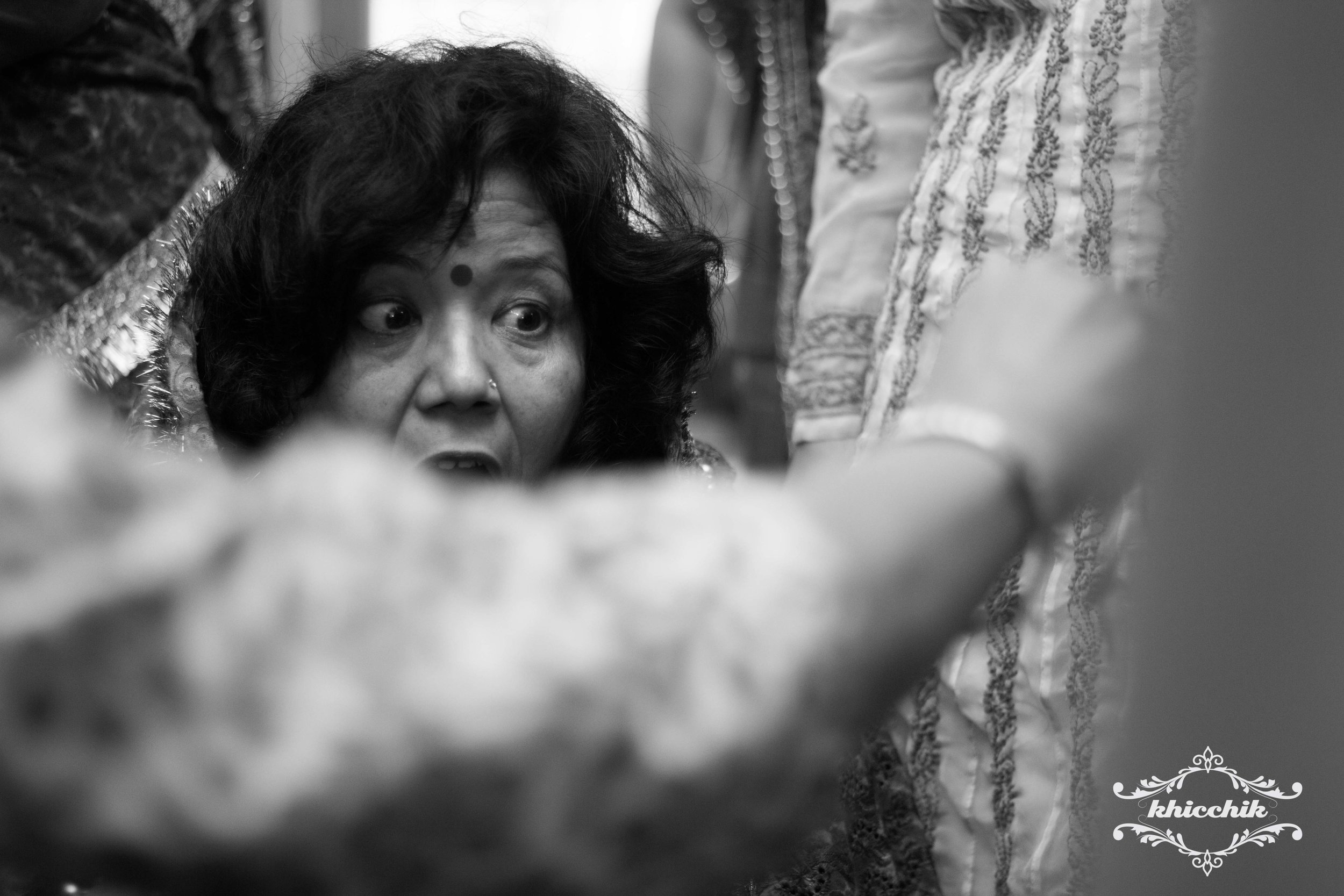
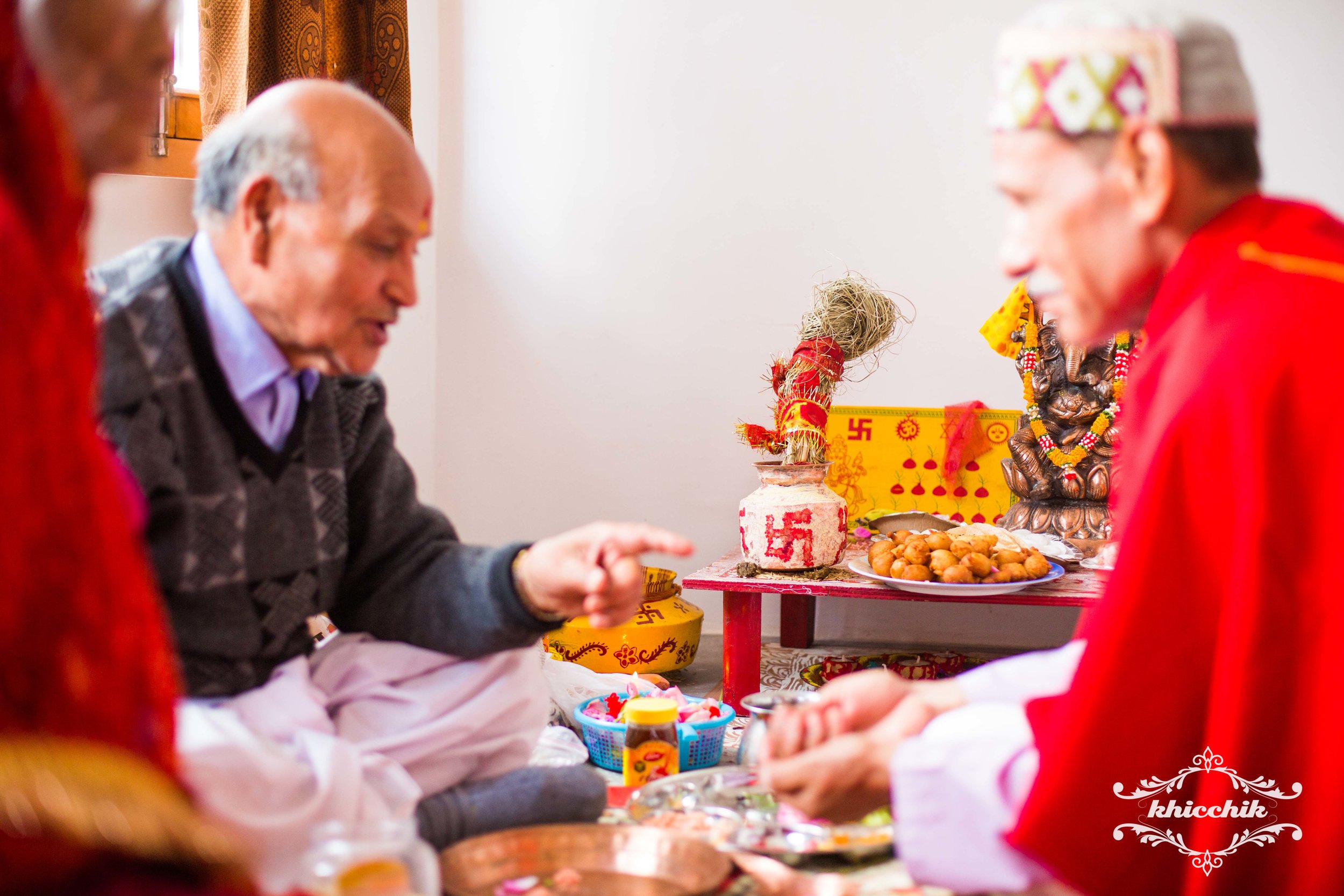
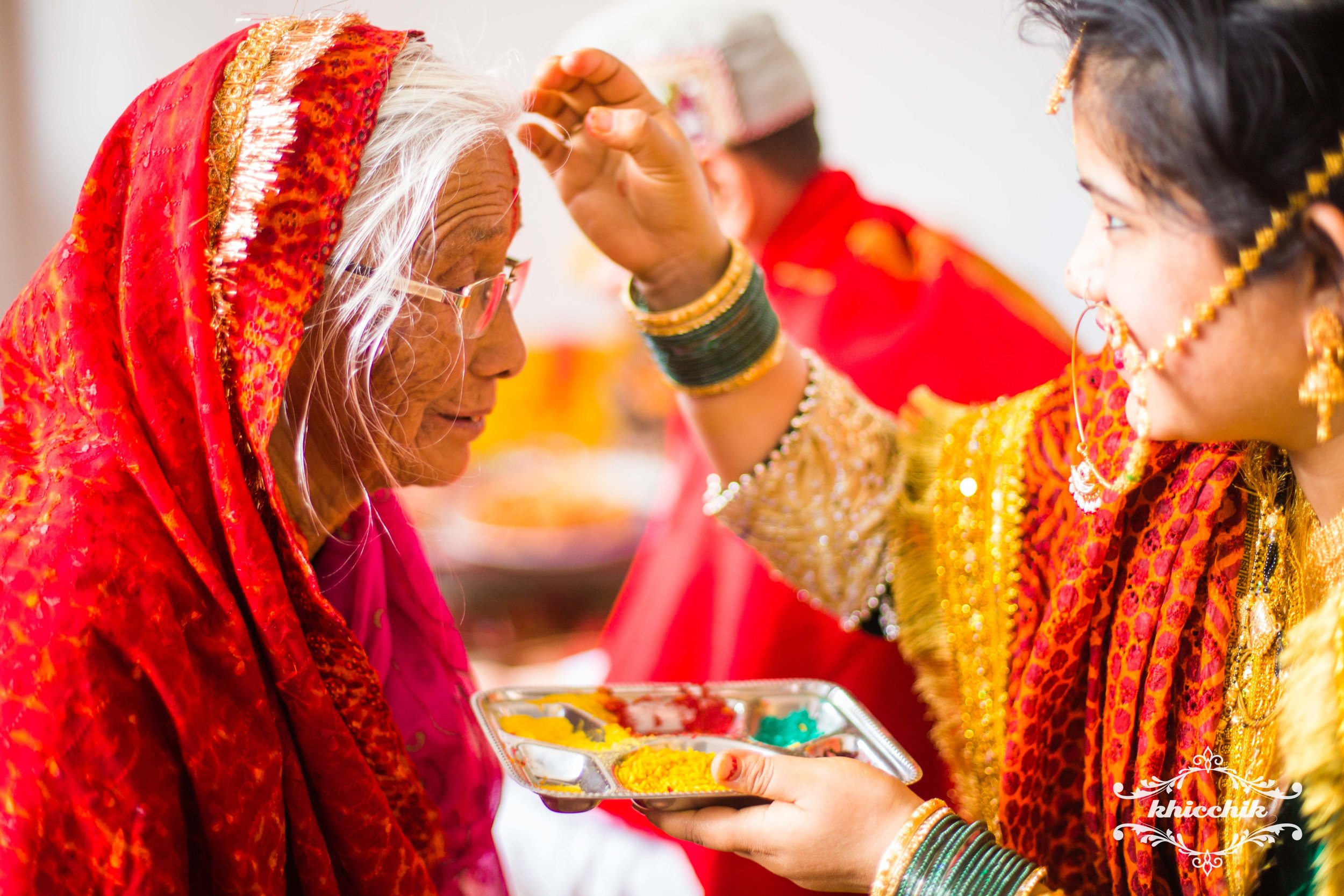
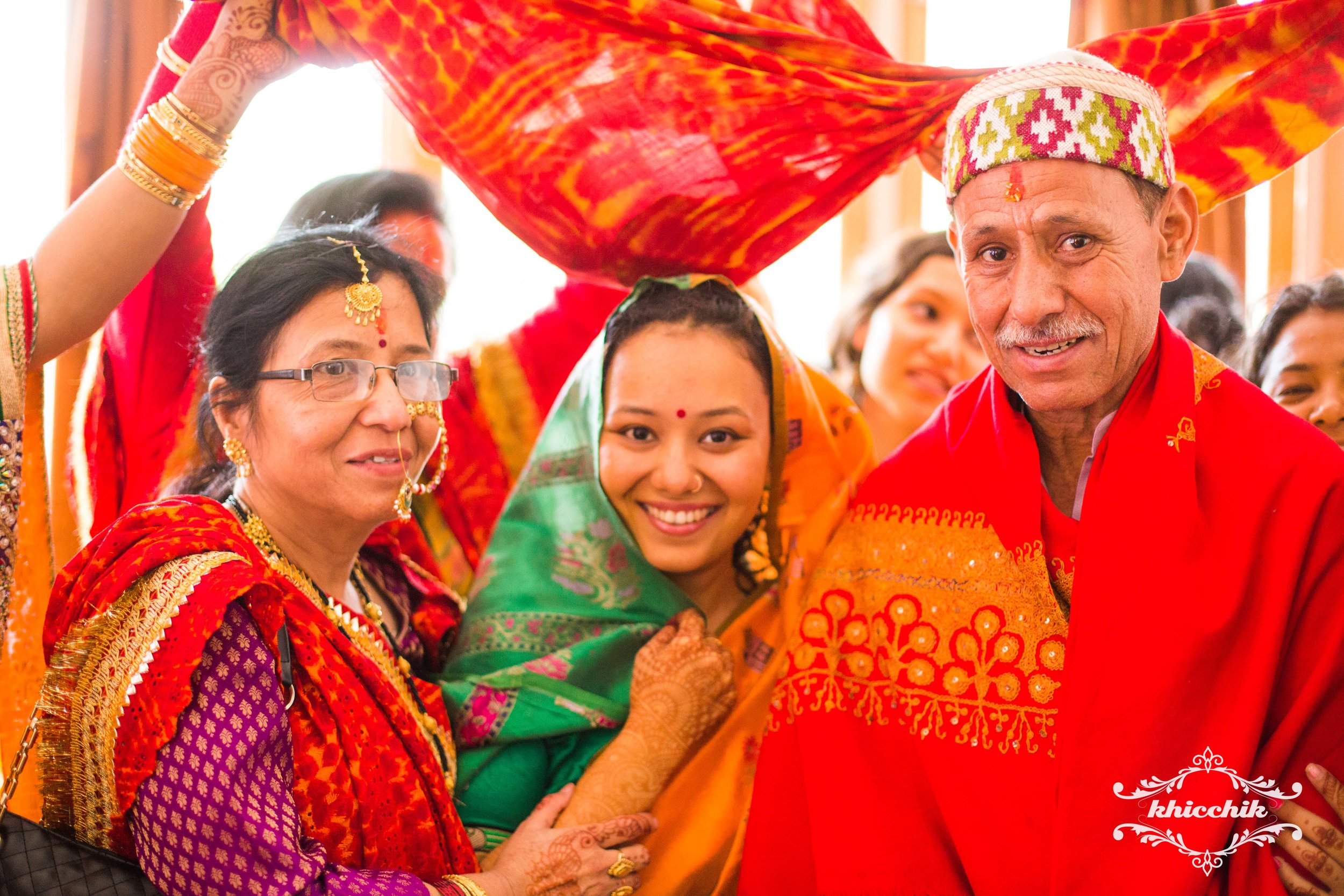
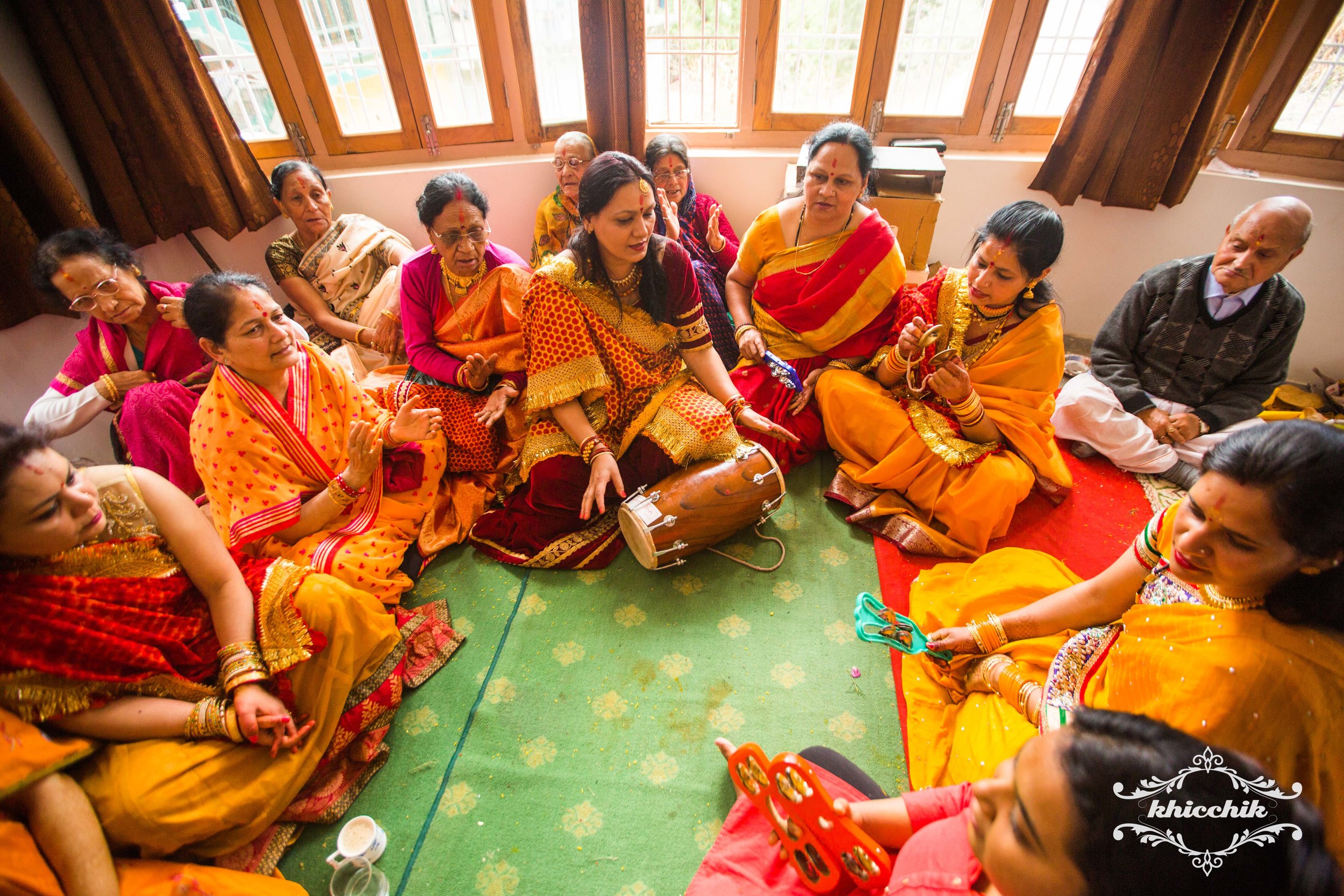
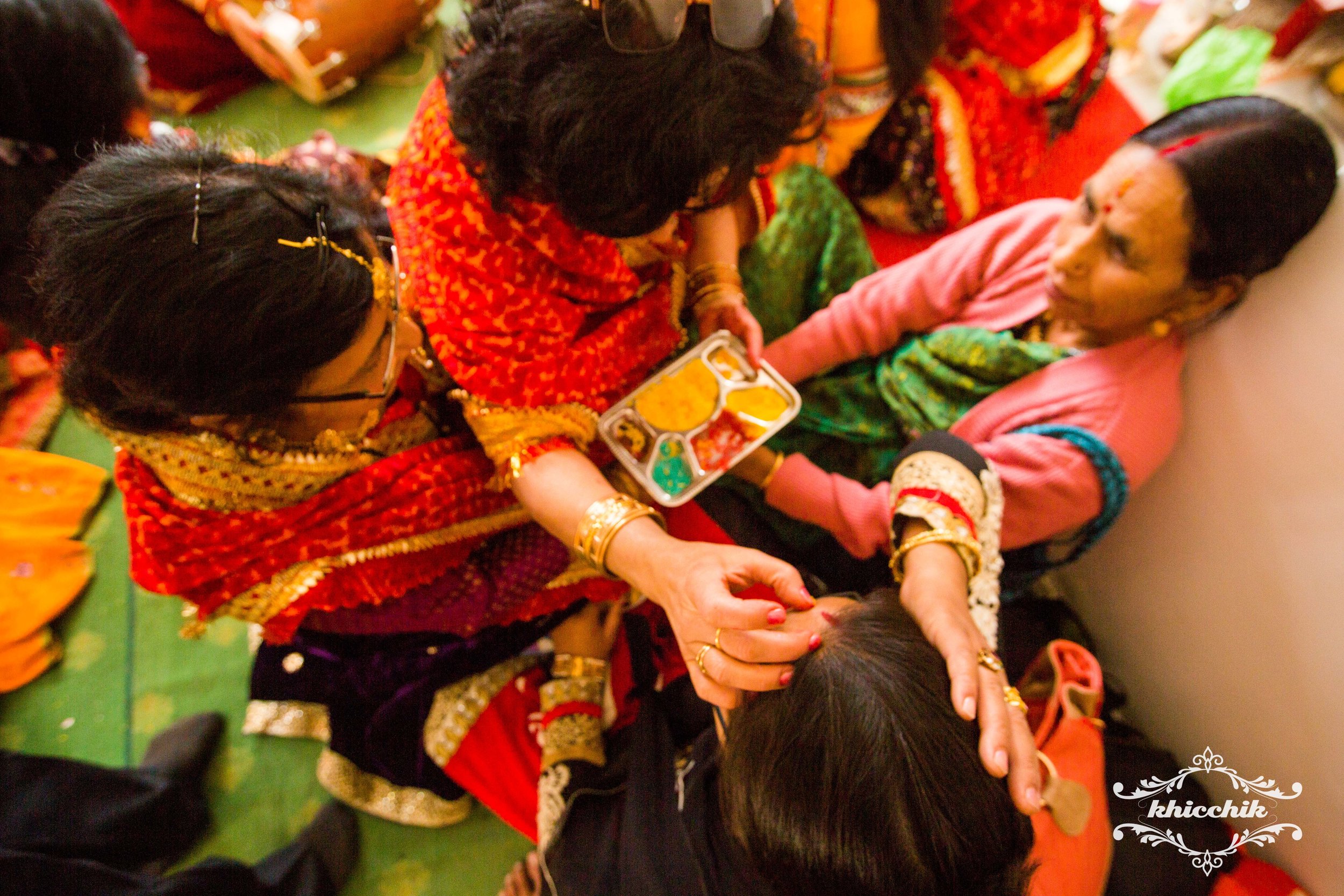
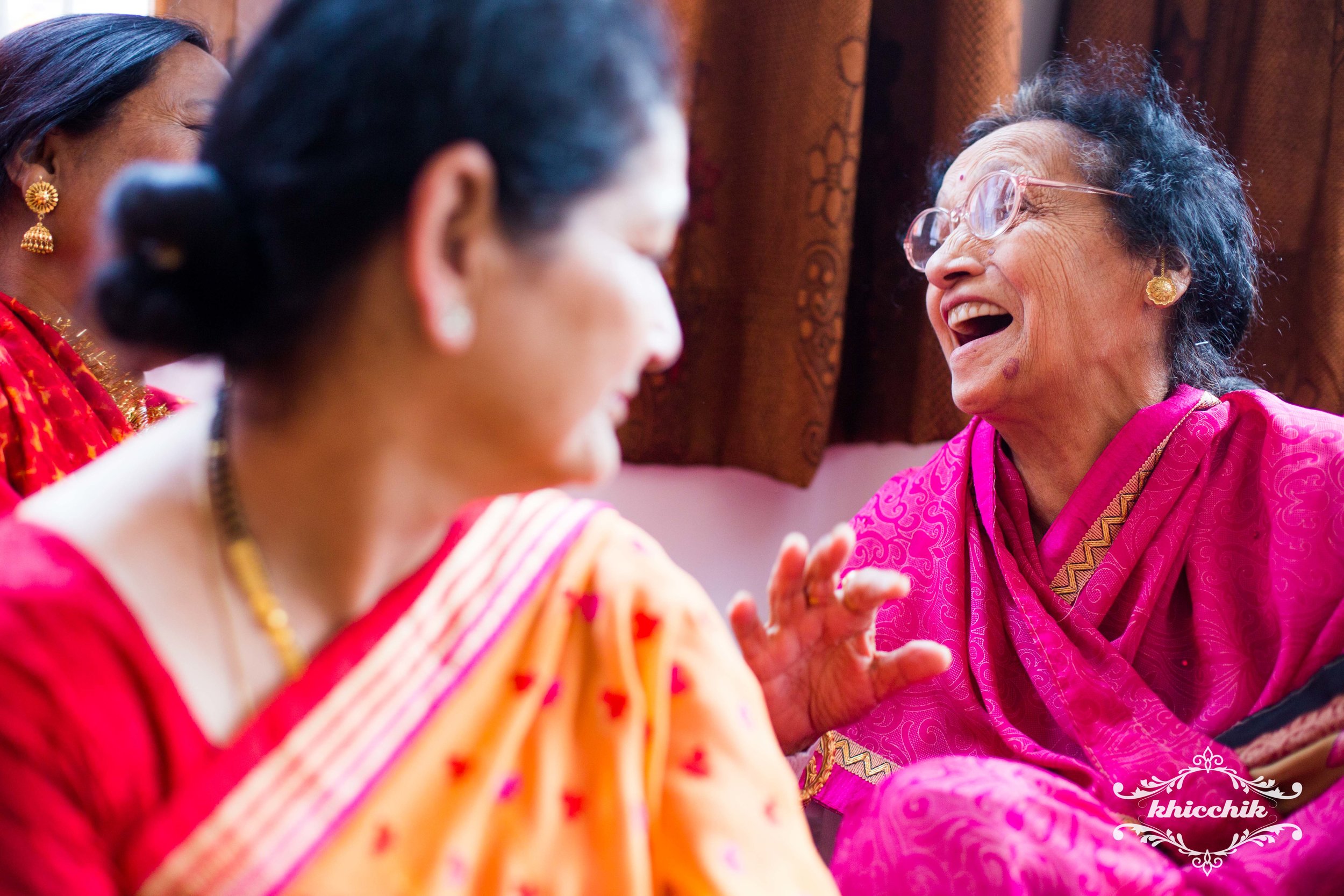
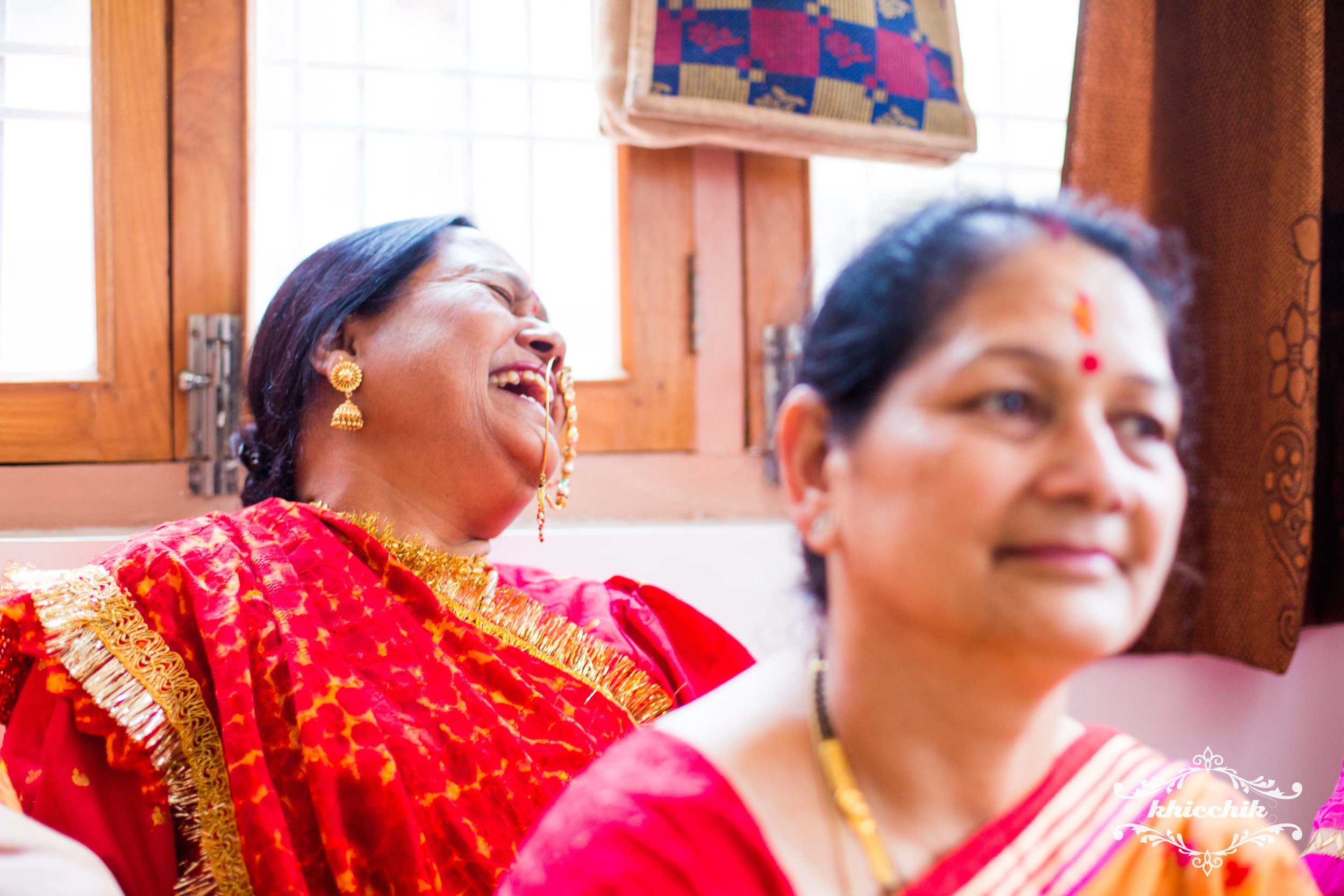
I had a really hard time sifting through the enormous number of photos from this ceremony. Normally a good edit is the one which doesn't repeat similar photos too much, but here each picture was unique because of changing micro expressions of Manika all the time. Never seen a bride having so much fun at her Haldi.
I would break this post here and continue the wedding album of Manika and Sukarn in the next blogpost. Let me know how you like it till now.











